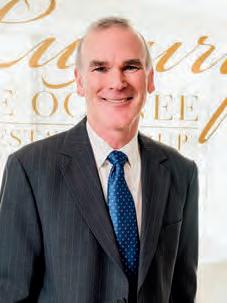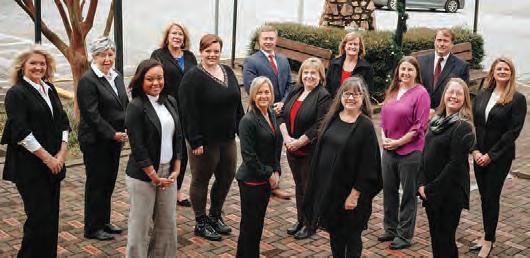




Set among 1,100 lush wooded acres, and bordered by nine miles of Lake Oconee shoreline, Harbor Club is an award-winning golf and lake community located an hour east of Atlanta in prime Georgia lake country. Whether you are looking to build the home of your dreams or revel in the comfort of a move-in-ready residence, Harbor Club offers an array of real estate opportunities for you to craft your greatest lake lifestyle.

SALES CENTER OPEN WEDNESDAY-SUNDAY
New Estate Homes from the $800s
The Enclave at Heron Ridge & Carriage Ridge homes from the $400s Heron Ridge and Club Cottage homes from the high 500’s Variety of golf, interior and pond homesites from $65,000
Ranked 4th in the state of Georgia & "Best Course You Can Play"
-Golf Magazine, GolfWeek





Since 1987, Reynolds Lake Oconee Properties has represented buyers and sellers alike in the sale
thousands of properties, all of them only at Reynolds Lake Oconee. Our team is
every day with club operations; plugged in daily with the social rhythms of clubs and events; and not distracted by, or
to buyers and sellers of any properties beyond the gates of Reynolds.
Reynolds Lake Oconee is what we do. It’s also all we do, and it shows.






Get back into the swing of thin G s!

Don’t let hearing loss take you out of the game.
A baseline hearing evaluation takes less than an hour, and the benefits can last a lifetime.
Schedule yours today.
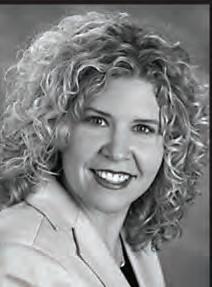 DR. KIMBERLY HOFFMAN
DR. KIMBERLY HOFFMAN
HARMONY MEDICAL CENTER
117 Harmony Crossing, Suite 8, Eatonton GA (706) 453-2119
Mon-Thurs 9am-5pm
Fri 9am-12pm
MADISON - (New Location!) (at rear entrance of Dr. Pamela Hall’s office)
2002 S. Main St., Madison GA (706) 453-2119
Wed. 9am-5pm
www.hearlakeoconee.com
volume xxvii , no . 1 , spring 2024
The magazine that reflects the lifestyle of residents of the Lake Oconee area and beyond.
PUBLISHER OTIS BRUMBY III
GENERAL MANAGER LEE GARRETT
EDITOR ANDREA GABLE
ART DIRECTOR DANIELLE HAWKINS
SALES & MARKETING BARBARA AYCOX
CONTRIBUTING WRITERS
CHIP BELL, JUDY GARRISON, TIA LYNN IVEY, CRYSTAL JACKSON, LEARA RHODES, ALLYN RIPPEN, JAMIE WILLIAMS, PATRICK YOST CIRCULATION DAVE GOSSETT
CONTRIBUTING ARTISTS
LISA BAYNES, JUSTIN EVANS, LEN GARRISON, WARREN GRANT, ALLYN RIPPEN, DEBORAH JOHNSON, JAMIE WILLIAMS
Please visit our website at www.loliving.com.
Unsolicited queries and submissions of art and writing not accompanied by a self-addressed stamped envelope will not be returned. Response time varies and Lake Oconee Living cannot assume responsibility for unsolicited materials. To contact the editor by email, address correspondence to editor@loliving.com.
You can request a media kit with information about our distribution, deadlines, readership, and advertising rates and specifications by emailing marketing@loliving.com
Lake Oconee Living is published for the United States, its territories and possessions. Four issues per year: $17. Single issues in the U.S. $5. If you are moving, renewing, or have a question, please enclose subscription label with all correspondence; allow four weeks for change of address. Address all correspondence pertaining to subscriptions to:
Lake Oconee Living, 259 N. Second Street, Madison Ga. 30650, or call 706.342.7440 or fax 706.342.2140.
©2024 Times-Journal, Inc.
Lake Oconee Living


36
46
Area courses rejuvenate the game with thoughtful enhancements.
STORY BY PATRICK YOSTHistoric property finds new life as a retreat in rural Georgia.
STORY BY TIA LYNN IVEY54
64

Railroad town of Union Point intersects old and new as revitalization efforts get underway.
STORY BY ALLYN RIPPENExploring the history, beauty, and essence of the familiar, fragrant flower.
STORY BY LEARA RHODESHarbor Club on Lake Oconee, by Warren Grant


By the Book
Growing literary greatness
Savoring the Masters traditions of the ‘Azalea’ and classic pimento cheese.
Can you dig it?
Breaking down the layers of an eco-friendly No-Dig Garden for Spring.
From the Heart Building Community
Greene County Habitat continues helping families on the heels of a successful Showcase.
Looking back at the childhoods of five famous Georgia authors.
As pickleball soars, organizers are serving up the idea of a Lake Area League.
Lessons through sailing
Aboard the J. & E. Riggin, a National Historic Landmark.
ABOUT THE COVER:
Beautiful blooming vistas abound throughout all of Reynolds Lake Oconee’s golfing experiences, like this one from the driving range at The Oconee Course that captures the essence of the season.
PHOTOGRAPHY COURTESY OF


As the vibrant hues of spring bloom across the Lake Oconee region, we’re delighted to share our Spring Issue, filled with stories that reflect the sense of renewal that the season naturally brings.
With nature reawakening from its winter slumber, the sunny days beckon us back outside, whether onto one of Lake Oconee’s meticulously groomed fairways or to a pickleball court (see page 27), or to simply stop and smell the roses (see page 64).
Local golf courses at Harbor Club, Reynolds Lake Oconee and Hard Labor Creek State Park are undergoing thoughtful enhancements to offer players fresh challenges and renewed excitement for the game (see page 36).
Union Point is embracing its rich heritage as it steams ahead into the future (see page 54.)
Further into the countryside, we explore the transformative journey of a historic rural property that has become a sanctuary for the soul. Heritage opens its doors this spring to visitors seeking to reconnect with themselves, their surroundings, and their faith, offering a sense of rejuvenation that transcends the ordinary (see page 46).

In this issue, we found ourselves surrounded by growth and possibilities that inspire us to keep telling your stories around the lake. We celebrate the spirit of transformation, resilience, and renewal woven throughout our community.
Revitalization also comes to historic Union Point as the once bustling railroad town marks its 120th year. Through community efforts and a shared vision for change,
Join us as we embark on this journey of renewal, capturing the essence of spring across the landscape of Lake Oconee.
Enjoy!












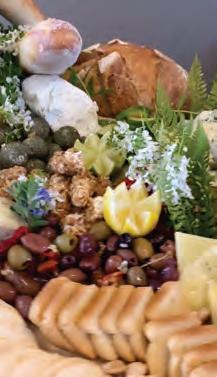
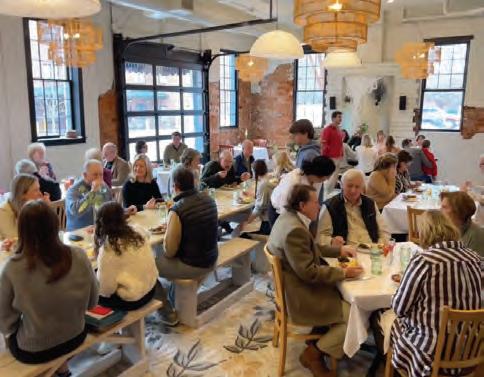






In the world of golf, few tournaments hold the prestige and allure quite like the Masters. As the azaleas bloom and the fairways come alive with a sense of tradition, there’s a culinary duo that stands out as iconic as the green jacket itself: “The Azalea” cocktail and the beloved Pimento Cheese sandwiches.
These culinary delights have become synonymous with the Masters experience, offering a tantalizing taste of Southern hospitality amidst the backdrop of Augusta National’s hallowed grounds.
These masterful creations are easy to recreate so you can experience the excitement of golf’s greatest week anytime in your own home.
Lake Oconee’s chef Deborah Johnson says the Masters helps remind us each year why we love Pimento Cheese on everything. With her version of this Southern classic, she dials up the sharpness to get that winning flavor.
• 2 8-oz blocks of extra sharp cheddar cheese, finely shredded
• ½ cup real mayonnaise (more to taste)
• 1 4-oz jar diced pimentos, drained (reserving 1 TBS of the brine)
• 1 tsp finely grated sweet onion
• 1 tsp garlic powder
• ½ tsp smoked paprika
• ½ tsp ground black pepper
• ½ tsp Espelette pepper (optional)
• ½ tsp ground mustard
• 1 tsp Worcestershire sauce
• Dash or two of hot sauce (optional)
1. In a medium sized mixing bowl whisk together mayo, pimentos, reserved brine, onion, Worcestershire sauce, garlic powder, paprika, peppers, and mustard. Add dash of hot sauce, if using.
2. Add finely shredded cheddar cheese, mix well. Place in airtight container and chill for 4 hours.
3. Serve with crackers, crostini, or celery as a spread or as Grilled Pimento Cheese sandwiches.
Note: I use a food processor to shred the cheese then spread it out on a baking sheet and freeze it for 15 to 20 minutes. Once the cheese is frozen, I put it back in the food processor and pulse a couple of times so the cheese is very finely shredded.


You’ll need:
• 1 oz of pineapple juice
• 1 oz of lemon or lime juice
• 3 oz of premium
• A dash of grenadine
How it’s done:
Combine lemon or lime juice, pineapple juice, and gin into a cocktail shaker with ice. Add grenadine to get the azalea shade of pink. Mix together well and pour over ice. Garnish with Luxardo cherries for a twist on the traditional Maraschino addition.



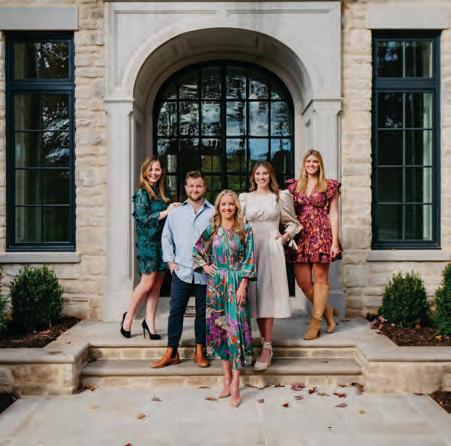






Winter days can be a time of introspection, reflection, and planning. For gardeners, the dormant days of the season can lend themselves to garden planning, seed starting, and daydreaming about a season of new growth. This year, I decided to try no-dig gardening to support the ecosystem and reduce the work of planting new garden beds.
No-dig gardens, sometimes referred to as lasagna gardens, offer several benefits. They reduce weeds in the soil, make your garden more sustainable, attract pollinators, help retain water for drought resistance,

reduce your carbon footprint by trapping carbon in the soil, and add nutrients to growing plants by utilizing natural materials. An organic, eco-friendly no-dig garden requires a few layers of the following materials.
• Start by choosing a sunny spot and designating the border of your no-dig bed. I used logs and old wood to create a framework. While a frame isn’t necessary, it can be helpful to determine the borders of your bed.
• The first layer of your no-dig bed will be the


existing soil, which you’ll leave untouched.
• Next, cover the soil with layers of newspaper or cardboard to help with weed control in your garden.
• Add leaves, mulch, or grass clippings to the paper layer.
• Top this natural layer with your kitchen compost and natural fertilizer.
• Add straw on top of the compost layer.
• Continue to alternate compost and fertilizer with straw until the bed is complete. The recommended depth is 13 to 15 inches.
By alternating nitrogen-rich green layers such as compost with carbon-rich brown lawyers like leaves and straw, you create a garden that will begin to break down like compost to create an enriched soil bed ideal for planting fruit, vegetables, and other plants. Many experts suggest letting your no-dig garden “cook” down for six months to a year, but if you want to try it this year, you can simply cover the layered beds and be ready to plant within as little as two weeks. You’ll add more layers each year, creating rich beds without digging into Georgia’s red clay.
To make your no-dig garden even more sustainable, consider adding plants that act as natural pest repellents. Some of the most common plants include citronella, lemongrass, marigolds, nasturtiums, petunias, and geraniums. Planting these or other pest-repellent plants will help discourage garden pests while providing an attractive garden for pollinators.
I’m new to the no-dig garden, but I’m already reaping the rewards. I’ve hauled around compost, fertilizer, and straw, but what I’m not doing is trying to break into the hard soil of my lawn. I’ve arranged the beds in simple geometric patterns and plan to include a mix of pollinators, pest-repellent plants, and vegetables to create a practical kitchen garden with curb appeal.

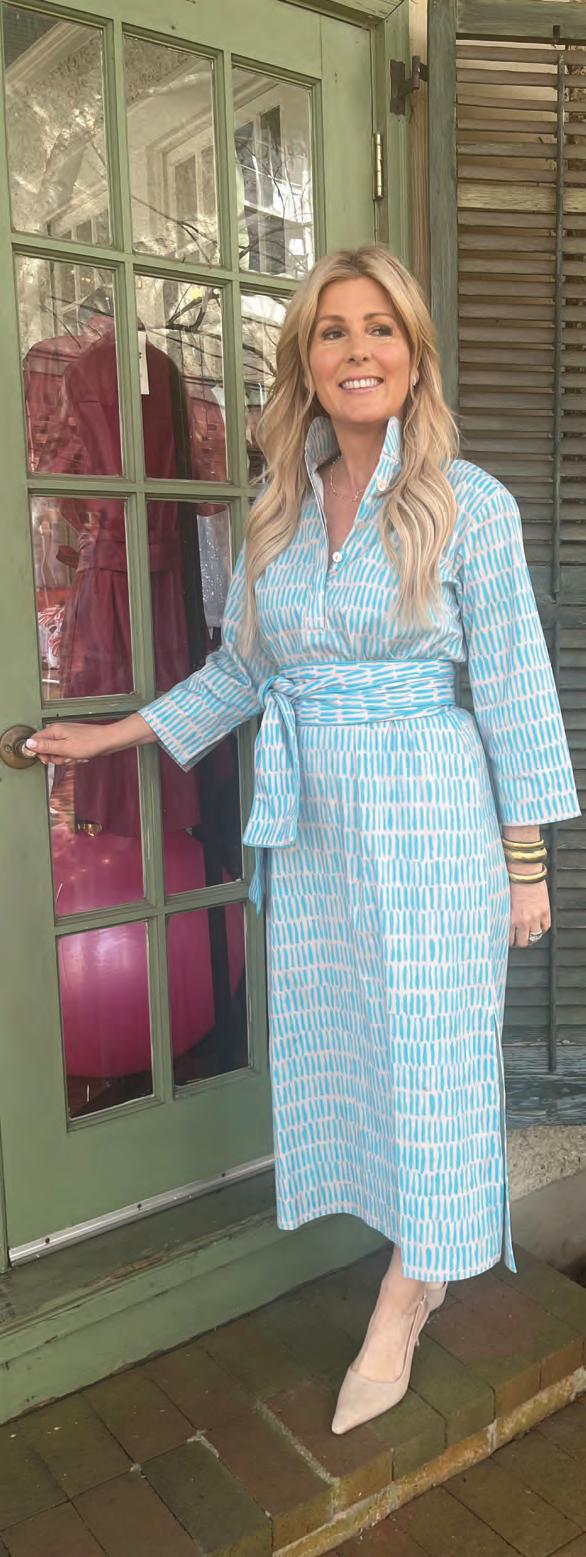



Since its inception in 2018, the Lake Oconee Showcase of Homes has come to be the largest fundraising event for Greene County Habitat for Humanity. But more importantly, it has come to represent what a caring community can achieve when they come together.
The Lake Oconee Showcase of Homes is popular tour event that offers a look inside some of the most exquisite homes inside Reynolds Lake Oconee, the tour’s presenting sponsor. The tour highlights the best in building, architecture, and interior design and is supported by inno-
vative leaders in these industries.
This most recent 2023 tour in October proved to be the most successful Showcase to date, raising enough funds for Greene County Habitat for Humanity to build four homes for families in need of safe, affordable homes.
A reception was held last fall at the home of Melissa and Fred Boehler in The Homesteads at Reynolds Lake Oconee to thank top sponsors, homeowners, Habitat board members and Showcase committee members who came together to once again “Raise the
Members of the 2023 Showcase Committee gather at a Top Sponsor Reception held last fall. Pictured: Shauna Winters (Chair), Diane Byers, Jan Broughton, Mary Crosswy, Justin Cullifer, Kathy Daniel, Cathy Duffy, Shelly Dufour, Jeannine Flynn, Stephanie Giorgis, Rich Grossman, Beth Hannon, Liz Hiatt, Jane Hutterly, Jen Jones, Charity Joiner, Kara Marren, Vicky McBride, Diane McGuire, Susan Mason, Luke Maslow, Susan Pitt, Jane Sowell, Susan Zinger, Wendy West, Charity Hatfield (Board Chair, GCHFH), Elaine Mathews (Executive Director, GCHFH).
Not pictured: Jennifer Baker, Karen Dorton (Assistant Director, GCHFH), Barbara Dunning, Cathy Kicklighter, Leigh Ann Warner.
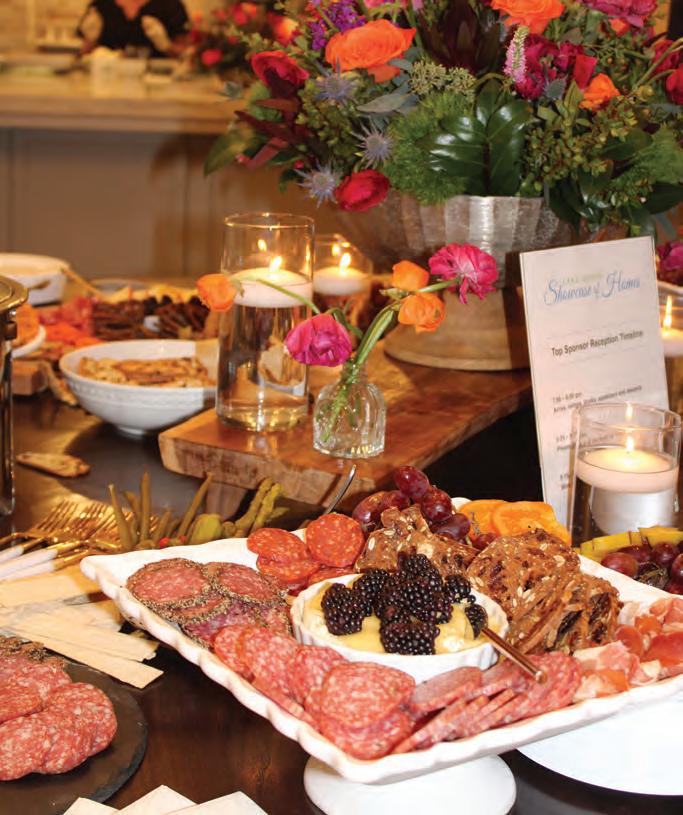

Roof” for Greene County Habitat.
Event organizers and GCHFH board members celebrated the generosity of the donors, individual and business sponsors who participated in the success of this year’s Showcase of Homes through sponsorships or donations.
Shauna Winters, chair of the Showcase of Homes committee, gave special thanks to the more than 30 Showcase Committee members for their tireless work behind the scenes to create the most successful Showcase to date.
“I’m so grateful for the amazing 2023 Showcase Committee,” says Winter. “Their dedication and talent combined for extraordinary results and will help Greene County Habitat build four homes in 2024.”
Since 1997, Greene County Habitat has built 77 homes for deserving families throughout Greene County. Volunteers construct the home, alongside the new homeowner, and then sell the home to qualified homeowners at zero-percent interest, allowing local families to realize the dream of ownership who might not otherwise have that opportunity.
Outgoing board chair Jan Broughton reminded those gathered at the reception that their outpouring of generosity is changing lives and making a difference in the community. And that change is not only happening now, but will be happening for generations, as children watch their parents buy a home they never believed they’d be able to buy.
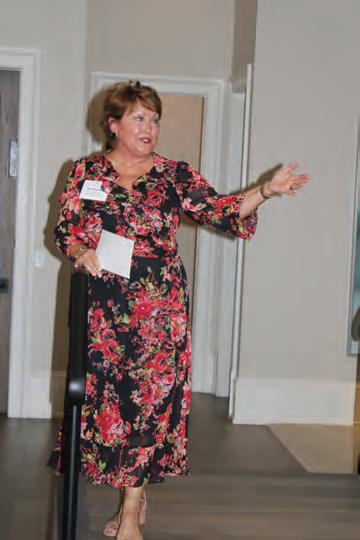
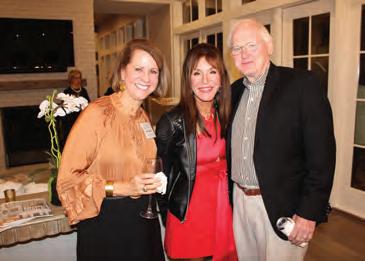
Charity Hatfield is now serving as the new board chair and plans are already underway for the next Showcase of Homes in the fall of 2025.
For more information, visit habitatgreene.net.
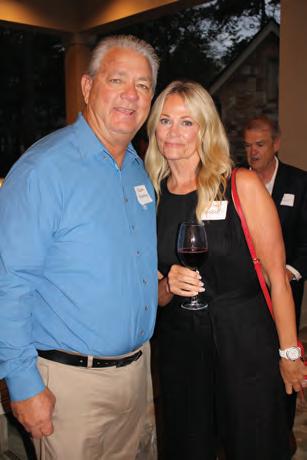
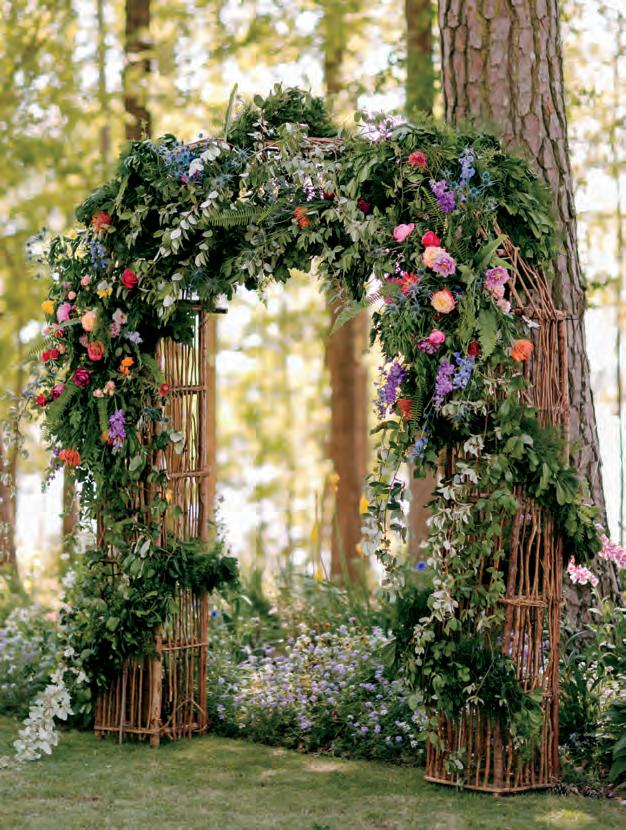







1 3 2
“Who knows, he may grow up to be President someday,” Aunt Polly said about Tom Sawyer in Mark Twain’s famous book by the same name. “Unless they hang him first!”
The childhood of famous authors can often be a precursor to their later talent and fame. Agatha Christie, likely dyslexic, struggled with handwriting and was called “the slow one” by her family. As an adult she elected to dictate her books, so she didn’t have to write. She wrote 66 detective novels. And F. Scott Fitzgerald’s teachers kicked him out of school at the age of 12 because he never finished his homework, likely due to attention deficit disorder. Even as an adult with a gift for storytelling, his writing was poor. Yet, he persevered and gave us “Tender is the Night” and “The Great Gatsby.”
What about famous authors who lived in Lake Country? How did their childhood reveal their momentous literary destiny? Here are five Georgia Writers Hall of Fame
inductees and a bit about their early beginnings.
Alice Walker (1): Before she could walk, Alice pushed herself up into a sitting position in a corner of her parent’s sharecropper shack and pretended to read the Sears Roebuck catalog. She “wrote” in the dirt with a stick. By the time she entered school at age four, she could already read. At eight, her brother accidentally shot her in the eye with a BB gun resulting in a very visible white cataract that caused the outgoing child to become withdrawn. She turned to writing poetry and short stories. At 14, the cataract was removed, and she was transformed back into an outgoing young woman. She was voted most popular and was high school class valedictorian. She would later write 36 books including the Pulitzer Prize winning book “The Color Purple” which was made into both a celebrated motion picture and a Broadway play.
Raymond Andrews (2) grew up
in a rented shack in the Plainview area near Madison. His parents were poor sharecroppers but read to him constantly and insisted he do well in school. His older sister, Shirley Andrews Lowrie, relates stories of how she and her siblings would do Ray’s chores because he spent all his chore time entertaining them with his stories. He left an inferior African American rural school at 15 to move to Atlanta with his older brother where he attended night school and worked odd jobs. He would author five books and win the James Baldwin Book Award. His brother, Benny, would become a world-renowned artist.
Flannery O’Conner (3) was a spoiled only child growing up in Savannah. But her father loved her colorful stories. At six, she insisted on calling her parents by their first names. In grade school she chewed snuff, gave tomatoes (instead of apples) to her teachers, and shot rubber bands from her braces while

her teachers were not watching. An avid reader, she often wrote sharp critiques of the children’s books she read. For example, she wrote of Lewis Carroll’s “Alice’s Adventures in Wonderland,” “Awful, I wouldn’t read this book.” She insisted her friends sit in the bathtub while she sat on the toilet and read scary stories to them. She became one of the world’s most famous writers of Southern Gothic, always writing with a dark, satirical style.
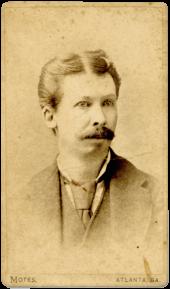

Philip Lee Williams (4) grew up in a family who were fans of the arts. At five years old, Williams picked up a newspaper and started reading a story out loud, something he had never done before. His parents didn’t know he could read much at all. After that, he read anything he could find and fell in love with books and writing. Williams would go on to publish 21 books of fiction, poetry, and essays winning numerous major book awards. He composed classical music, painted, sculpted and even managed to become a newspaper editor for 12 years.
Joel Chandler Harris (5) was born in Barnes Tavern and Inn in downtown Eatonton where his mother worked as a seamstress and janitor. As a child, his mother read to him each night. By the time he entered school, he had practically memorized “The Vicar of Wakefield.” He was a poor student but an excellent reader. Despite his extreme shyness and stutter, he entertained students with his funny stories and witty lines. He and his pals formed a singing group called The Gully Minstrels in which he sang and pretended to play an old fiddle he found in the trash. He would become known as the funniest man in Georgia as a newspaper columnist for the Savannah Morning News and the Atlanta Constitution as well as the author of eight volumes of Uncle Remus stories.
Albert Einstein wrote, “If you want your children to be intelligent, read them fairy tales. If you want them to be more intelligent, read them more fairy tales.” Childhood is fertile ground for growing literary greatness only if carefully nurtured and encouraged.
Chip Bell is an award-winning, best-selling author and serves on the board of Georgia Writers Museum. 4 5

PICKLEBALL, LIFE IS BETTER WHEN YOU PLAY TOGETHER.




 STORY BY JAMIE WILLIAMS
STORY BY JAMIE WILLIAMS
Hear a strange sounding “pwock” over some hedges in your neighborhood?
Pickleball.
Can’t seem to round up old friends for a game of tennis doubles?
Pickleball.
Spouse or BFF no longer answering their phone, and busy most weeknights and Saturday mornings?
Pickleball.
It’s a court sport played on a badminton-sized (yes, the yard game you played in the 70s) court that has taken the nation by storm. The net is just shy of three feet high. The ball is perforated – think, “wiffle ball” –and slightly smaller than a softball. The newest sound of sports in America is the pwock, when said plastic ball meets fiberglass paddle – about twice the size of the familiar ping pong paddle, but smaller than a tennis racquet. And like the ball, it has holes in it, too. It is no doubt the sound you’ve been hearing in city parks, country clubs, and retirement communities no matter where you currently live.

“Paddy” is a growing slang term for this sporting equipment. And everything about Pickleball is growing in America right now.
Pickleball is the fastest growing sport in the US, with different estimates putting the number of active players anywhere from 36.5 to 45 million in the US alone. USA Pickleball statistics counted 8.9 million new players to the sport in 2023. Basically, if you haven’t played yet, it is likely you will.
And for good reasons. First, it is the best kind of fun. It is fast paced but not very hard to pick up for a beginner. Like tennis, it can be played in singles or doubles. Unlike its court-cousin tennis, typically associated with country clubs, expensive lessons and all-white outfits, players new to pickleball can usually learn the basic rules in a single session with friends. No special apparel is needed, and equipment is inexpensive and easy to carry and store in the car.
Any person of almost any fitness level can pick up pickleball for fun, exercise, and a great social network. Renewing the spirit of local competition in just about every US city and town, pickleball courts are on every municipality’s list of development
plans.
Take Morgan County, where tennis courts at historic Hill Park were converted into six pickleball courts in 2020. Day or night, you will see people playing and laughing, while a line of lawn chairs fills up with players visiting while they wait their turn to play.
Kathy Plumley, co-captain of Madison’s first official ladies’ pickleball team, The Mad Dinkers, started playing Pickleball in 2021. “Everyone I knew was starting to play, and my kids play it too,” Plumley says. She set up a Facebook page for players in the Morgan County Area, and it has taken off. “We found more ladies’ teams from Greensboro, the Turtle Cove Community and even Jennings Mill in Athens. We based some informal league play on the rules we learned playing league tennis. We play the best of five sets and set up three lines of doubles for each team.”
Morgan County recreation department picked up on the trend right after the pandemic, converting the courts at Hill Park in Madison to match the rise in demand and adding three indoor courts to their current facility. “We saw the national phenomenon, and the growth of the


sport here in Morgan County,” says Recreation Department Director Lance Alexander. “County Administrators are looking for places to put more courts, but more pickleball courts are being installed at the new Recreation Expansion Facility opening March 2025.”
The Lake Country is no different. United States of America Pickleball Association (USAPA) Ambassador and Professional Pickleball Registry (PPR) registered coach, Ray Brindley, began fostering grassroots growth of pickleball in Greene County about seven years ago.
Brindley is the author of “The Art

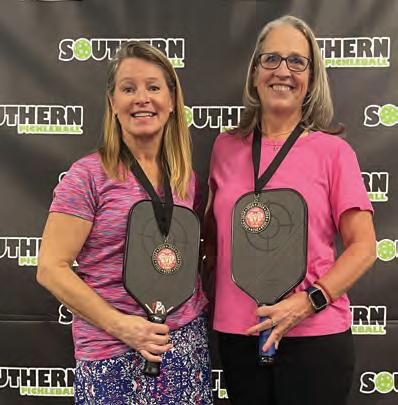
of Pickleball” and organizes interclub and league play for Greene County and border counties. The lake area, he says, now boasts about 1,000 active players. He is working with colleagues and organizers in Putnam, Greene, Baldwin and Morgan Counties to solidify a league with up to three levels of play.
“The sport was originally targeted at senior players,” Brindley says. “Because it is built around a soft game called ‘dinking’ and the rules are built around safety, it becomes not only a way to get people out and active, but studies show the thinking aspect of the game has health benefits, too.”
Brindley and his enthusiastic partners also work to introduce and develop the game at all ages. “First Serve is a development program for youth,” he explains. “The goal is to enhance awareness of respect for neighbors, land, water and air.” Pickle-
ball, Brindley believes, is an excellent sport where youth benefit from built-in rules for safety, respect, and etiquette.
“Easy to learn, difficult to master,” according to Brindley, “pickleball plays very fast, with zones called ‘the kitchen,’ and the ‘non-volley zone.’” And this is the appeal of the masses, men and women, kids and seniors, seemingly everywhere. The size of the court and the terminology is part of the fun, he says. “Even as fast as the game is,” Brindley says, “you can cover the court in 2-3 steps.”
If trying something new, with the upside of being relatively easy, pain-free and very social, is part of your self-spring-cleaning agenda, borrow a paddle and assess your “Picklebility” – coined by PickleballMAX.com – “an embodiment of one’s passion, ability, and addiction to pickleball.”
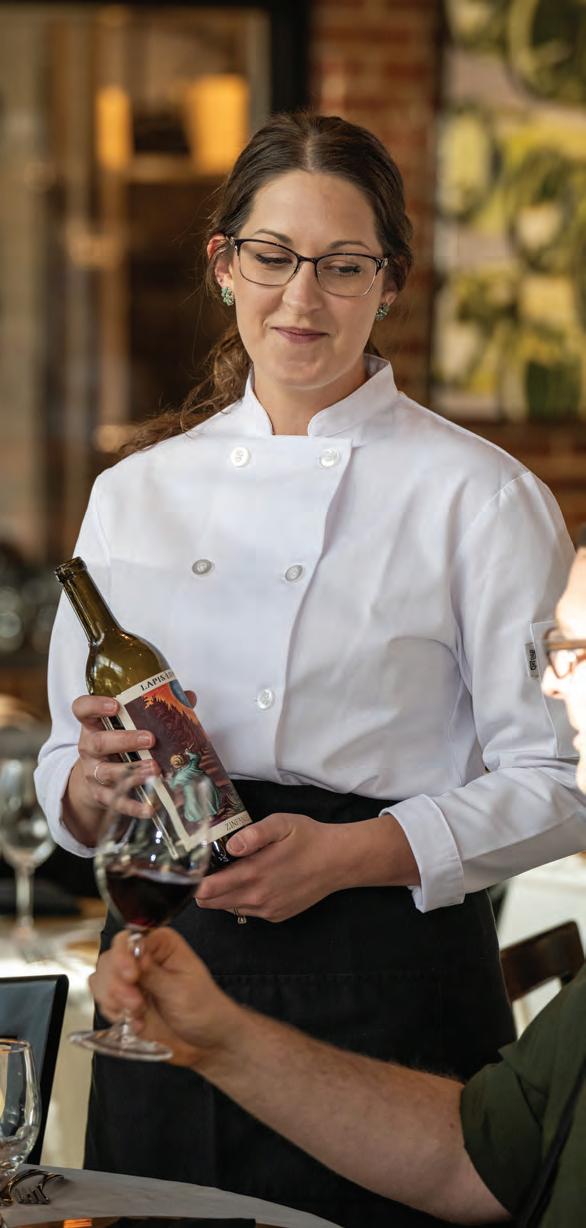








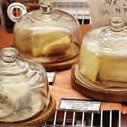









YOU’RE ONLY HERE FOR A SHORT VISIT.
Don’t hurry. Don’t worry.
Don’t hurry. Don’t worry. Don’t hurry. Don’t worry. Don’t hurry. Don’t worry.
“ ”
AND BE SURE TO smell the flowers
ALONG THE WAY.
– Walter Hagen

As players take to the greens in force this spring with a renewed interest, local courses are keeping their game moving forward through the implementation of enhancements designed to maintain Lake Oconee’s distinction as a top golfing destination.
Progress continues on nine new holes at Reynolds Lake Oconee that will complete an entirely new 18-hole layout, becoming the seventh golf experience in Reynolds’ stable of award-winning courses.
Harbor Club on Lake Oconee is making subtle shifts to its landscape by reducing the number of bunkers over time to increase playability and pace of play.
At nearby Hard Labor Creek State Park in Morgan County, the historic public course has restored its iconic waterwheel on The Creek’s signature hole.
These efforts to refresh and modernize the region’s various opportunities for play keep Lake Oconee relevant in a traditionally stoic, yet everchanging landscape of the game.

Harbor Club on Lake Oconee, photographed by Warren Grant.
Harbor Club’s expansive 18-hole lakefront golf course is as challenging as it is beautiful. The Morrish-Weiskopf design features rolling hills, shoreline curves, and more than 70 sand bunkers. Soon, that number will be closer to 50.
With the goal of increasing playability and pace of play, Harbor Club will be eliminating 13 to 14 sand bunkers, creating a fresh new look for members and guests.
General manager Brandon Matney says it’s a move toward modernization, noting that most newly constructed courses typically include around 35 bunkers. “It’s definitely more in line with trends in golf course architecture, but it really is going to increase the pace of play,” he says.
Matney says Harbor Club is seeing an increased number of players overall at the course ranked the fourth “Best Course You Can Play” in the state of Georgia by Golf Magazine and Golfweek.
“I feel like we are finally back to a sense of normalcy after COVID,” he says. “Golf is back on a growth pattern.”
A lot of those players on the course, he’s noticed, are younger – kids and young adults out playing with their parents and grandparents – and a fresh landscape is what he’s hoping to offer.
“We just want to make it a more joyful experience,” says Matney. “We want people to come here, enjoy the course, and have fun.”





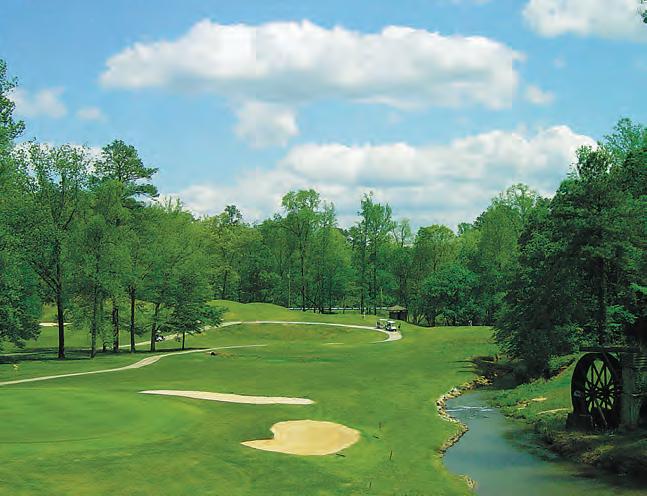
When President Franklin D. Roosevelt’s New Deal program came to Rutledge, Georgia, to construct Hard Labor Creek State Park, the federal government sent hundreds of men to construct the 6,000-acre park as part of the Civilian Conservation Corps. The men were paid $30 for the six month enlistment, with $25 automatically sent to the workers’ families.
That was 1934 and the waterwheel that now helps frame the par 3, 160-yard hole No. 5 was turning.
The wheel, part of Robertson’s Mill and Dam that dates back to the late 1800s, continues to turn and has become the iconic symbol of one the favored public golf courses in the Lake Country area.
The waterwheel is used prominently in logo designs for The Creek Golf Course at Hard Labor Creek State Park. However, says, The Creek Golf Course Head Professional and Manager Karl Gross, keeping the wheel as a functioning part of the course’s history is a battle. Maintenance for the site is “constant,” Gross says.
Recently, Friends of Hard Labor Creek helped to replace the former wooden wheel with a new aluminum model. The park consulted with historical preservation groups and the Environmental Protection Division to gain insights on how to properly replace the wheel.
Replacement cost was $30,000, says Gross.
“And that’s a fraction of what we have spent on the old mill,” he says.
To that end, the Friends of Hard Labor Creek organize and sponsor an annual “Waterwheel Tournament” to raise funds to keep the symbol alive.
The “Friends of Hard Labor Creek Waterwheel Tournament” will be held on Saturday, May 4. The tournament is a four person team scramble. Registration begins at 8 a.m. at the golf course pro shop, 1400 Knox Chapel Road, Social Circle, and a shotgun start begins at 9 a.m. Cost is $80 per person for the general public, $70 for guests of annual Greens Pass members and $50 for Hard Labor Creek Greens Pass members and volunteers and staff of The Creek Golf Course at Hard Labor Creek State Park. Golf cart sponsorships are available for $50 and hole sponsorships are available for $75. To register, visit racerpal.com/ races/waterwheel.
Both individuals and foursomes can sign up to play. Range balls and lunch will be provided.
Gross says the water wheel is an important part of the history of both the course, which was constructed in 1968, and the park. “It was here long before the golf course was here,” he says. “It’s a known and important symbol.”
Reynolds Lake Oconee will soon celebrate its newest addition, a new 18-hole layout that will become the seventh golf experience at Reynolds. Renowned golf course architect Tom Fazio created nine new holes to join with the existing Bluff nine at the National Course he originally designed in 1997. Featuring a blend of existing and new holes, including a ninth green overlooking Lake Oconee, the new course promises to offer a challenging and unforgettable golfing experience for players of all levels.
Spanning both sides of the peninsula and touching the shores of Lake Oconee from both Richland Creek and Oconee River, the new



The new course by acclaimed golf course architect Tom Fazio will continue from hole #5 of Bluff 9 to the new site.
– Photography courtesy of Reynolds Lake Oconee
course will showcase the area’s natural beauty, with rolling terrain, hardwood forests, and breathtaking views.
Exclusive to Reynolds Lake Oconee members, the new course is slated to open in late 2024, adding to the prestigious collection of golf experiences available. With two private 18-hole courses and an additional 90 holes for member and resort guest play, Reynolds Lake Oconee continues to solidify its reputation as a premier destination for golf enthusiasts.

 The Kingdom at Lake Oconee offers expert golf instruction at a premier training facility.
– Photography courtesy of Reynolds Lake Oconee
The Kingdom at Lake Oconee offers expert golf instruction at a premier training facility.
– Photography courtesy of Reynolds Lake Oconee

Looking to take your golf game to the next level? Lake Oconee boasts premier golf instruction facilities that offer topnotch coaching and cutting-edge technology for players of all levels. Whether you’re a seasoned pro or just starting out, these facilities are dedicated to helping golfers reach their full potential on the course.
The Kingdom at Reynolds Lake Oconee
• Exclusive Retreat: One of only two facilities of its kind in the country, The Kingdom provides club Members and guests with an exclusive destination for full-game improvement.
• Expert Instruction: Whether refining your swing or perfecting your short game, instructors at The Kingdom are dedicated to helping golfers achieve their goals.
• Custom Club Fitting: A professional team of club fitters and builders offer personalized attention to ensure your equipment matches your game perfectly.
• Find out more: reynoldslakeoconee. com/life/kingdom
Golf Learning Center at Cuscowilla
• Tillery Golf Academy: Led by John Tillery, named one of Golf Digest’s Top-50 Teachers in America, this premier academy offers stateof-the-art facilities and expert coaching.
• Comprehensive Training: With open hitting bays for year-round practice and outdoor areas to refine all aspects of your game, Cuscowilla’s 2,200-square-foot center provides a complete golfing experience.
• Find out more: Cuscowilla.com











Nestled between the serene pine trees of Sharon, Georgia, lies a historic 200-acre Catholic settlement that has been revamped into a state-of-the art retreat center that retains the property’s sacred faith elements while offering modern amenities to provide the ideal destination for relaxation, contemplation, and renewal.
After a decade of restoration and development, Heritage will welcome its first retreat guests in April 2024. While classic and creative Catholic imagery is a staple of the retreat center, all are welcome to rest and reflect amidst the sprawling grounds.
The Heritage Center of the
Purification of the Virgin Mary in Taliaferro County, about 40 minutes east of Lake Oconee, was designated as one of the Georgia Trust for Historic Preservation’s Places in Peril back in 2014. Since then, a motivated group of lay Catholics, led by Betsy Orr, purchased the property with a vision to create a sacred space for all people to escape their “over-scheduled, busy lives” and immerse themselves into tranquility through nature, history, and spiritual imagery and practices.
“It all began 20 years ago,” says Betsy. “I had this burning desire to build a place of retreat. I believe it was a very God-inspired idea.”
While the idea always swirled around in Betsy’s mind, her own busy life kept her from bringing it to fruition. She was in the midst of raising two young children with her now late husband, Larry Orr, who passed away in 2011 at the age of 50 from a fatal brain tumor. Betsy spent the last years of Larry’s life caring for him and then became a single mother after his passing
“Life just kept getting in the way and I couldn’t get any traction on where the retreat center should be,” says Betsy, who lived in Atlanta at the time. “The idea definitely went on the back burner, but it never went away.”
Betsy converted to Catholicism in 2008, shortly before her husband fell ill. As a devout believer, when she discovered the oldest Catholic settlement in Georgia was sitting, deteriorating, in danger of being lost to time, she joined a campaign in 2014 to save the property. It was during this process that it finally dawned on Betsy that Heritage could become the oasis she had always dreamed of creating.
“I thought, ‘this is the place,’” remembers Betsy. “This is where people can come to get away from their over-programmed lives and pervasive technology, where people can come to reconnect with nature, reconnect with each other and reconnect with the Lord.”
The “heart” of Heritage is the Pine Lodge, a 9,000-square-foot meeting space for gatherings, conventions, classes, and fellowship. The lodge is surrounded by tall Georgia pine trees and 26 cozy cabins that sleep up to 60 people.
“Each cottage is designed to encourage rest, reflection, and prayer with soothing color palettes, comfortable beds, and elegant furnishings and accessories,” says Ginger DiMascio, executive director of Heritage. Guests can relax on the screened porch among the natural beauty of the wooded landscape, take walks in meditative prayer spaces, fish at the pond and dock


Above: Walking trails and meditative prayer spaces feature a diverse collection of ‘sacred art’ created by artists from all over the world.
Left: Heritage comprises four historic assets, including the iconic Purification Church built in 1883.

house, or enjoy common fellowship spaces at the pavilion and fire pits.
According to Betsy, the expansive site comprises four historic assets, including the iconic Purification Church built in 1883, the Purification Cemetery and Locust Grove Cemetery, the oldest Catholic cemetery in Georgia, and Heritage Preserve, the farmland of the first Catholic settlers.
Heritage ensured that the restoration and revitalization of the property honored all the historic character at the site as well as planning for ways to bolster one of the poorest communities in Georgia.
“This project entails small-town revitalization, historic preservation, world-class art and design, conservation, organic farming, and an amazing backstory fueling the vision,” says Ginger.
Heritage features a diverse collection of “sacred art” created by artists from all over the world in the style of paintings, stained glass, mosaics, and sculptures.
“We hope this little rural town in Georgia becomes a destination for viewing sacred art from all over the world,” says Betsy. “It’s a new way to experience the gospel through these beautiful works of art, which the
Catholic Church has a long history of, but we are doing it in a new way here at the retreat center, integrating it all with the rural outdoor spaces we have out here.”
Leaders of Heritage hope to attract guests from all walks of life for a variety of retreat opportunities. There will be special religious events and conferences slated around the Catholic calendar as well as opportunities for individuals, families, small groups, and corporate events to use the property.
“We hope everyone who visits us will ponder these mysteries and appreciate the history and natural beauty of this place,” says Betsy.
The earliest iteration of the Catholic congregation connected to The Heritage Center dates back to the 1790s, when English settlers migrated from Maryland in pursuit of religious tolerance built a small church in the Locust Grove area, not far from modern-day Sharon.
According to Heritage, Catholics from all over eventually flocked to the parish and founded the village of Mary Land, which eventually became known as Locust Grove. The settlers built their first church, literally just a log cabin, in the late 1790s. As the congregation grew, Within



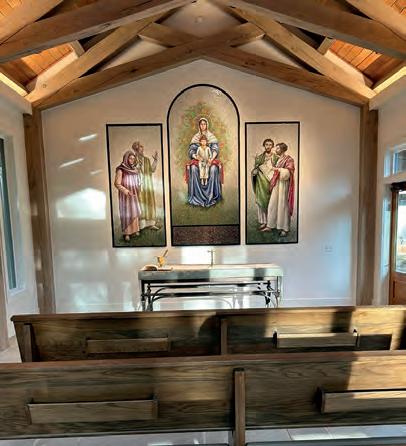

the log church was replaced by a larger frame structure in 1821. Sometime between 1818 and 1821, the first Catholic school in Georgia was chartered as Locust Grove Academy. It was to be the alma mater of three future governors of Georgia, including Alexander Stephens from nearby Crawfordville.
Around the time of the Civil War, the Locust Grove settlement relocated to nearby Sharon, which became a booming railroad community and a Catholic epicenter in the state of Georgia. However, when the cotton industry crashed in the early 20th century, so did the thriving community in Sharon.
But now, after three development phases, Heritage has painstakingly restored the historical elements on site, beautified the indoor and outdoor spaces with compelling artwork, and constructed modern facili-
ties to accommodate overnight guests looking for a reprieve from the outside, overstimulating world.
“This is the place to come to spend quality time with your family and children in a way that’s hard to find in your normal daily life,” says Ginger.
“This is a unique project in that it reaches back and it reaches forward,” says Betsy. “There is this peace of reaching back to the foundation of the settlement and the faith here, honoring the historic properties and using it again. We are giving them dignity again. Then there is a part of the project that reaches forward. We are doing something new and opening up for even more people to experience it.”
Heritage will hold its grand opening April 5-7 in celebration of Divine Mercy Weekend. To find out more information about Heritage, visit heritagega.org.






Jan
Jan
Gina
Jeannine
Elisa





































Stephanie
Diane







With over 30 years in the construction industry we provide superior workmanship for

No gimmicks, No hooks, No commitment. CONSTRUCTION

1379
DESIGN.



We know you have a choice in who you work with on your project. Allow us an opportunity to earn your business and show you first hand why we are top in the industry.
WE’RE HERE TO BUILD YOUR DREAMS.




Spring has arrived at Lake Oconee, with daffodils and green bringing color and life back to the bare landscape. Spring is an apt metaphor for one small town in Greene County –Union Point.
This historic town that once thrived during early industrialization and later weathered economic winters is seeing renewed interest. Union Point has much to be proud of as it celebrates its 120th birthday in March.
It’s easy to pass through the town in the blink of an eye, but linger longer and you’ll discover an enticing intersection of old and new, historic gems and pockets of growth. Thanks to ongoing investments in its cultural, historical and recreational infrastructure, efforts to revitalize the historic downtown are starting to pay off. Union Point is poised for a revival.

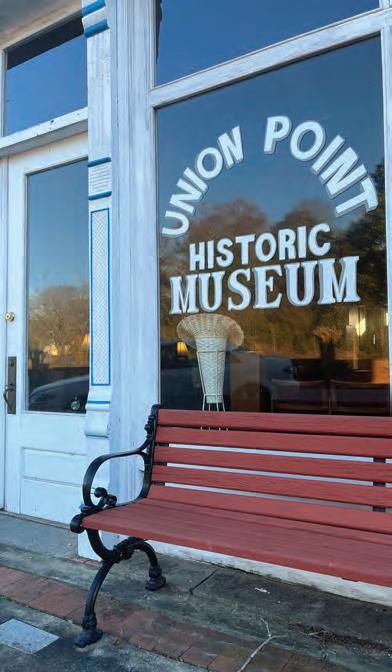
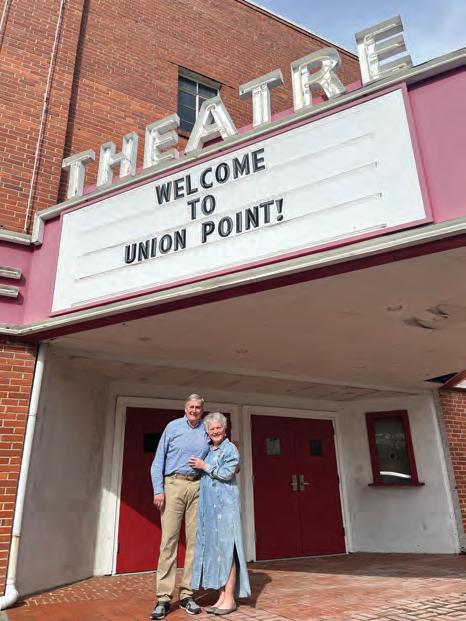
Located halfway between Augusta and Atlanta just off I-20, 45 minutes south of Athens, and 20 minutes from beautiful Lake Oconee, Union Point is rich in history with its nationally recognized historic district of Victorian homes and commercial structures.
Developed from a railroad junction in 1834 and later chartered in 1904, the city once served as a stopover for traveling salesmen, called “drummers.” It also played a role during the Civil War, with the railroad bringing wounded soldiers to The Wayside Home to convalesce. A stone memorial commemorates the dedicated heroines of Union Point who took care of the soldiers – the only memorial of its kind in the U.S.
The city has an industrial legacy as well. For more than 100 years, Union Manufacturing Company (later Chipman-Union Hosiery Mill), known locally as the “Sock Factory,” made its home here. An historic complex built in the late 1800s, the mill was integral to the economy – many still remember the mill whistle that blew three times a day. The company filed for bankruptcy in 2001 as industries moved overseas, taking with it vital revenue for the city. Like other small towns in Georgia at the time, Union Point entered a period of relative dormancy.
Despite these challenges, a band of passionate individuals saw the city’s potential for renewal. Early seeds were planted in 2007 when the Mayor and City Council furnished funds for the Downtown Development Authority (DDA) to purchase the historic Union Theatre and save the building. Built in 1947, this architectural gem was once an active movie theater until it closed in the early 1960s. The building changed hands several times
 Mayor Lanier Rhodes and his wife, Jill, in front of the historic Union Theatre. These natives of Union Point were instrumental in helping secure grants to revitalize the landmark.
Allyn Rippen
Mayor Lanier Rhodes and his wife, Jill, in front of the historic Union Theatre. These natives of Union Point were instrumental in helping secure grants to revitalize the landmark.
Allyn Rippen
over the decades, at one point becoming a furniture store.
The theater’s revitalization has gotten a boost recently thanks to some savvy fundraising. The DDA received a series of grants from the Fox Theater’s outreach arm, Fox Theater Institute (FTI), the most recent in 2023. The FTI initiative is helping small communities across the U.S. revitalize their historic theaters to spur economic and cultural growth. The funds have been used to make necessary structural repairs and complete a Green Room backstage. The restoration of the auditorium is also underway.
Union Point native and DDA President, Jill Rhodes, has been instrumental in galvanizing support for this landmark. “When I was in school, this is where we came to watch science fiction movies and westerns.” Rhodes and others have long recognized the theater’s historical significance as well as its potential to draw in visitors from the greater Greene County area. Once completed, the theater will be an all-inclusive event venue for the community. “This is our home,” says Rhodes. “Where you are planted, you want to bloom.”
Around the corner on Sibley Avenue, some enterprising individuals are breathing life back to the historic storefronts that face the train tracks where passengers once disembarked. The buildings date back to the 19th and early 20th centuries, including Union Pharmacy, which has been in operation since 1927. In 2021, a young pharmacist and native of Greene County, Dr. Liddy Cronan Smith, took over the business with a vision in mind. “I knew I wanted to come home and serve my small town,” says Cronan. “I always had a calling to do something special in a small community.”
The store retains its old-school charm, back when drugstores sold ice cream floats and you knew the pharmacist by name. Step inside and you’ll find a vintage soda fountain on your left and an aromatherapy diffuser on your right. It’s old-meets-new – at once honoring the past while infusing it with a bright future. Cronan plans to re-open the soda fountain, add a gift shop, and increase clinical services. In a nod to earlier days, the store even makes deliveries.
The City, too, has relocated its Historic Museum to Sibley Ave, signaling a renewed focus

Pharmacist Liddy Cronan Smith took over Union Pharmacy in 2021 and is working to modernize the historic space while maintaining its small-town charm. She plans to reopen the vintage soda fountain at the front of the store and add a charming gift shop.
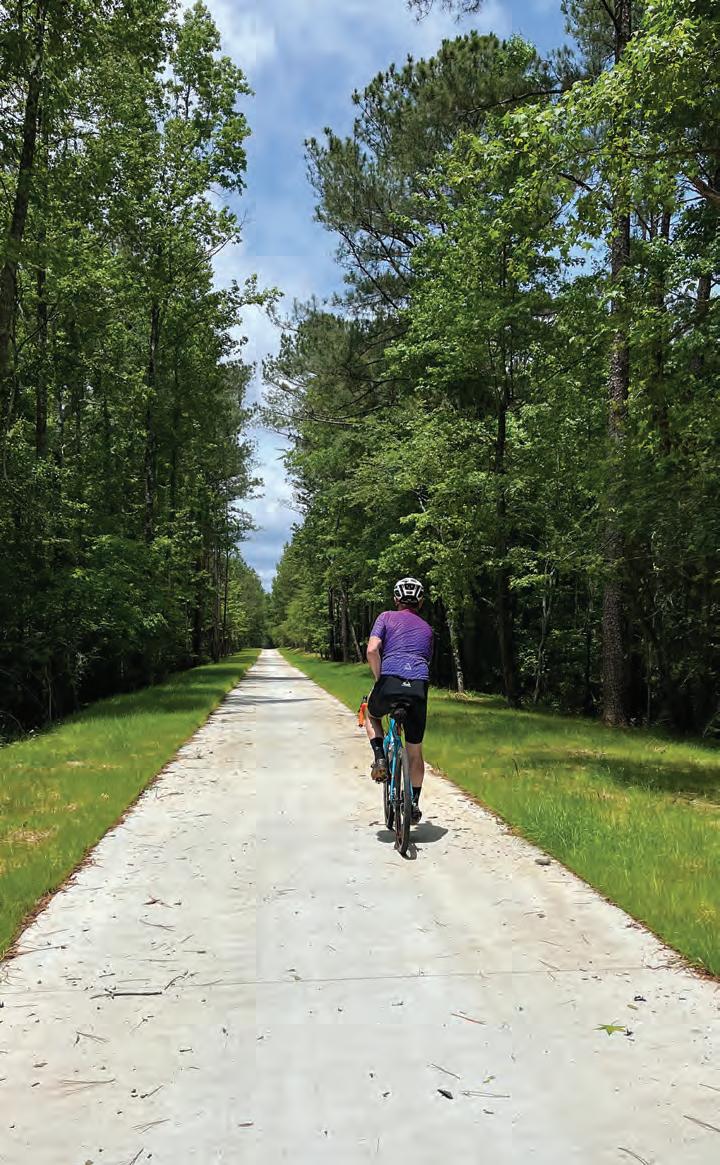
 Andrea Gable
Andrea Gable
and help support local healthcare!
Book an ocean or river cruise with Alita Travel, and $300 will be donated in your name to Morgan Medical Center in Madison, GA.
For more information contact:
Denise.Bergeland@avoyanetwork.com 706.347.2121
As a member of MMC Auxillary, I would greatly appreciate your consideration in helping this worthy cause when you make your next travel plans.
Sincerely,
Denise Bergeland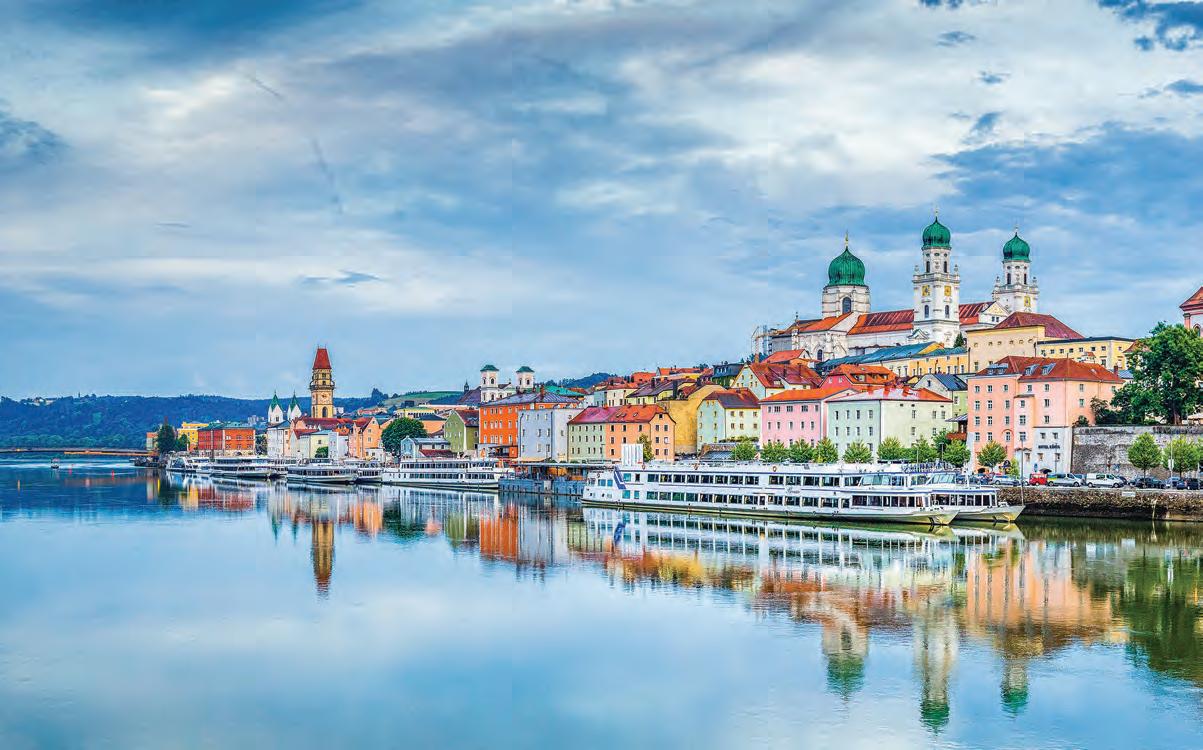





 Passau city panorama with Danube river at sunset, Bavaria, Germany
Passau city panorama with Danube river at sunset, Bavaria, Germany
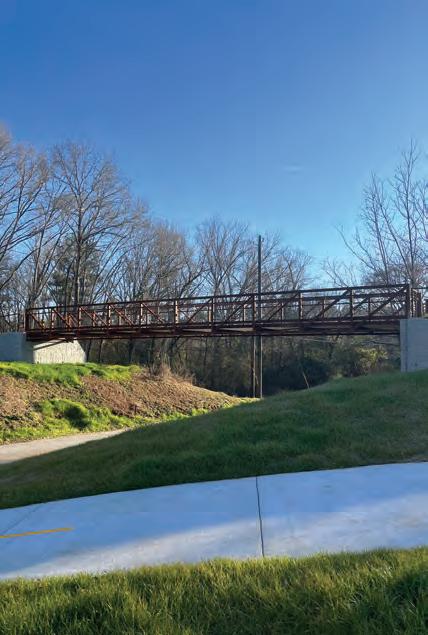
on downtown. Much of the town’s remarkable history is highlighted here, most notably in a narrated film and collection of portraits. In the 1980s, local artist Henry Barnes was commissioned to paint the “Twelve Apostles” on the ceiling of Immaculate Conception Catholic Church in Atlanta. Barnes famously used the faces of people from Greene County for his paintings, and the museum has the original studies on display. Just next door, The Point Market sells fresh produce and authentic tacos and tamales that locals love. These parts are known for barbecue (Jackson’s BBQ Corner is a must), but this grocery/eatery may be the town’s best kept secret. Demographics have changed over the years, and new faces mean an exciting crossroads of culture and commerce, not unlike the junction’s past. And while progress is necessary, small town popularity also relies on the good things that stay the same. Rhodes
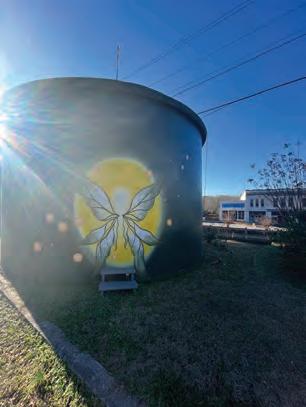
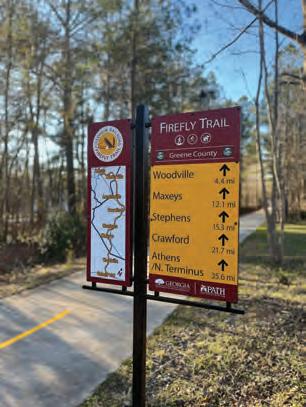
Sports Corner and Rutherford’s Flower Shop are two of those beloved family-owned businesses that have long histories here.
The Firefly Trail is arguably one of the most anticipated developments of late, bringing new life to the old train bed that runs between Union Point and Athens. Named for the embers that flew from the locomotives, the Firefly is a proposed 39-mile path that will connect the historic corridor along Hwy 77. The $3.5 million rail-to-trail project

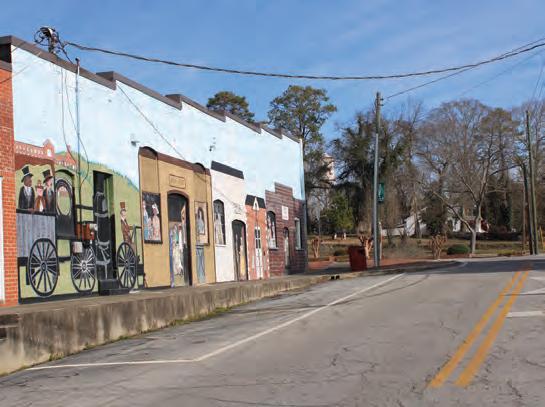
has been in the works for years and promises to ignite economic growth and recreational resources for residents and visitors.
Lisa Baynes, a Greene County native and avid cyclist, joined the board of Firefly Trail, Inc. in 2018 to help garner funding and stakeholder support. “Growing up in Union Point, my vision was not only about creating a rail trail but reviving the spirit that once defined this place. I wanted to be a part of something that would create a legacy for this town.”
The ribbon cutting ceremony last
 The Firefly Trail will ultimately run from Athens to Union Point, connecting all the small communities along the way.
The Firefly Trail will ultimately run from Athens to Union Point, connecting all the small communities along the way.
On Saturday, March 23, historic downtown Union Point hosts a full day of festivities, starting with the 13th Annual Ticket to Ride event at 9 a.m., followed by the City’s 120th birthday celebration from 10 a.m. to 4 p.m. The event will include live music, food trucks, craft vendors and homesteading exhibits, activities and train rides for kids, and tours of the Historic Museum. There will be birthday cake, beer provided by Oconee Brewing Co. and an all-ages Classic City Race Services 5K at 3 p.m., reviving the local favorite “Sock Trot.” Sports broadcaster Tony Barnhart will also be signing copies of his new book, “The 19 of Greene.”
WHAT: 13th Annual Firefly Trail Ticket to Ride and Union Point 120th Birthday Celebration
WHEN: March 23, 10 a.m. - 4 p.m.
WHERE: Downtown Union Point
INFO: (706) 486-4102
REGISTRATION: fireflytrail.com/ ticket-to-ride


November was “a true testament to the power of working together for a common goal.” The project players were able to navigate obstacles like rising construction costs and land acquisitions to officially open the 6.5 miles stretch from Union Point to the Oglethorpe County line – the longest continuous section completed to date.
Outdoor recreation is one reason why people love to visit Lake Country. A run, walk or ride along the Firefly gives a tangible connection to the agricultural and industrial roots that shaped this area. It’s a unique experience to quite literally follow in the tracks of the past. Coasting on a bike through tree-lined bends and farmland stretches, you can almost hear the steam engine blowing.
“My decision to join this initiative was not just a personal choice; it was a commitment to the rebirth of my hometown,” says Baynes, who is helping with one last push to complete the remaining .3 miles of trail. This key stretch will con-
nect the trailhead to downtown, bringing opportunity with it.
There is much to celebrate this spring when the City hosts its 120th birthday celebration. The event will revive the 5K “Sock Trot” from the Chipman-Union days, maps of walking and driving tours will be available at the museum, and Union Theater will serve as a hub for the Firefly Trail Ticket to Ride cycling event, now in its 13th year.
It’s a melding of past, present and future, and the city hopes to engage the wider community to come see all that’s happening. Revitalization takes time, and there is still work ahead for the city, but its leaders are confident their vision will come to fruition. Rhodes and many others agree, “We love this place and see a future for it.”
To learn more, visit unionpointga.org and fireflytrail.com.
In November 2023, organizers and supporters gathered to officially open the completed section of the Firefly Trail in Union Point.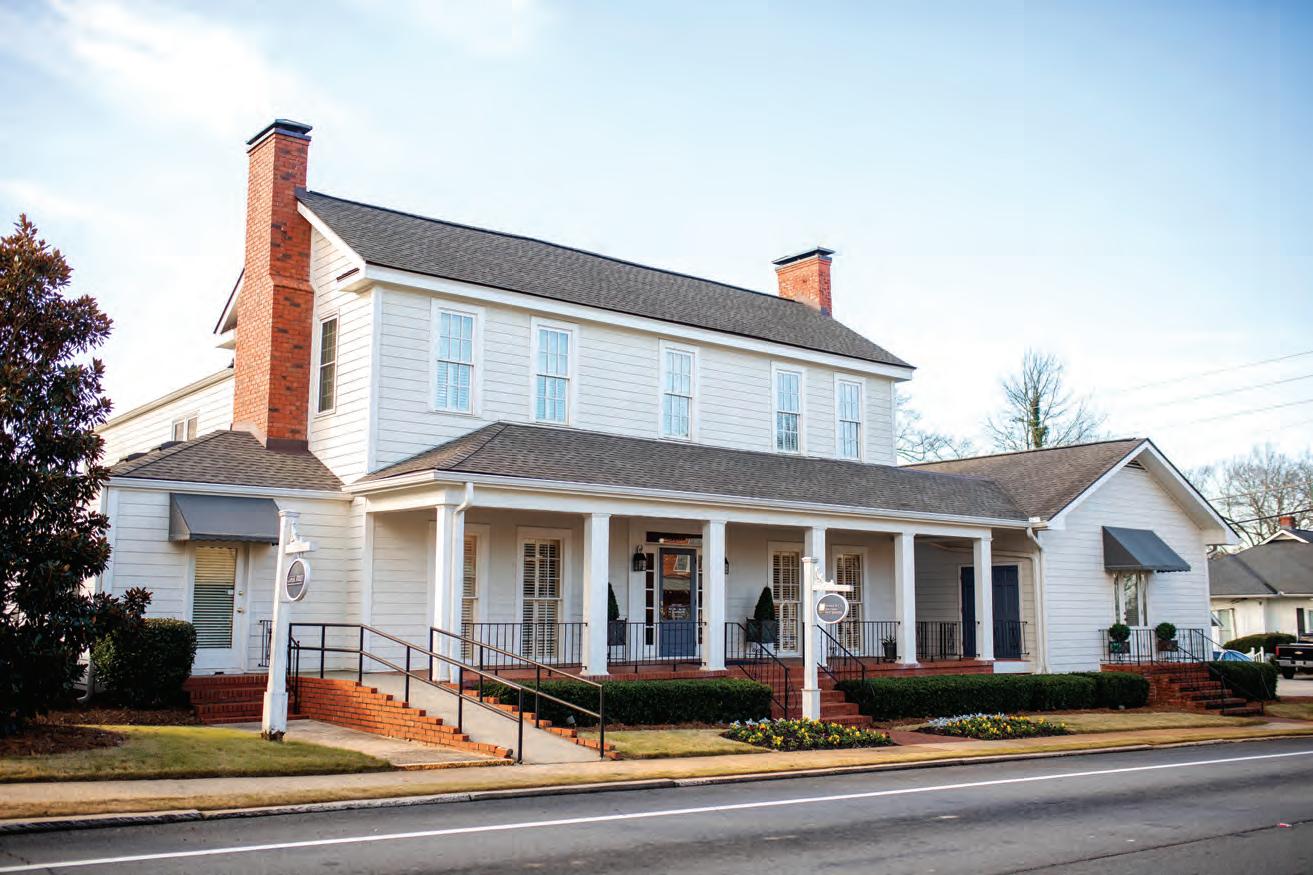


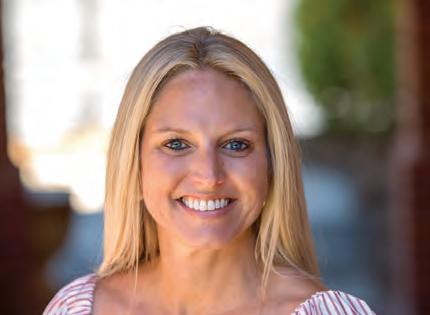




















 story by Leara Rhodes
story by Leara Rhodes

Roses are a force to be reckoned with. Powerful enough to make men and horses run. Their political power reverberates from a rich history. Their buying power has made the flower industry reach for the moon. A rose’s beauty can take one’s breath away. And midmorning, when the rose is open and its fragrance is at its best, the rhetoric is to “stop and smell the roses” as a way to enjoy life.
The first run associated with roses began in Roman mythology when Venus, goddess of love, ran to warn her lover about a plot against him. As she ran through thorn bushes, her blood droplets turned into red roses. This red rose has motivated men to compete to play in the granddaddy of all bowl games, the Rose Bowl since 1902. However, the roses in the parade preceding the game are a major attraction for one million people to see 60,000 of them covering one float.
Another run for roses began, according to the Kentucky Derby website, after roses were presented to ladies attending a Louisville party; the rose became the official flower for the Kentucky Derby in 1884. Bill Corum, a sports columnist for the New York Evening Journal, coined the phrase “run for the roses®” in 1925 to describe the Kentucky Derby.
The first rose garland presented to a Derby winner symbolized the determination needed to reach the Winner’s Circle. Now as a major production and a symbol for the Derby, the rose garland, crafted by the Kroger Company since 1987, takes a dozen master florists and many volunteers 10 to 12 hours to create. As a public event, it attracted 6,000 people in 2023


to the Middletown Kroger store on Derby Eve. The finished garland gets a police escort to Churchill Downs and is guarded by the U.S. Navy until presented to the winning horse and jockey, according to the Kentucky Derby website.
The motivation to get roses is more than just winning the Rose Bowl or the Kentucky Derby, it’s because getting roses means something. A bouquet of roses presented to performers is authenticating that what the performer did was “great.” Georgui Kassaev, an Athens resident since 1996, was part of the Moscow circus invited to entertain Olympic spectators in Athens. He and his family performed equestrian acrobatics. His trick was called “the drop of death”– the only trick where someone has actually died. The performance tent would be pitch black.
“The trick was done with blended illusion and black light riding,” Kassaev explains as he sips a coffee at Hendershots. “The rider would drop down off the horse with his hands near the back hooves and then pull himself back up. The audience only saw the costume in the black light and a fake mane on the horse. If the performers did really well, at the end of the show when they returned to the arena for a curtain call, there would be a standing ovation and kids running out with bouquets of red roses to give to the performers.”
Learning equestrian acrobatics came from his nomadic ancestors of Ossetians from the Caucasus Mountains near the border of Georgia. Military riding maneuvers were used in games they played using their horses, such as avoiding capture and escaping from enemies. There was pride in doing something his ancestors did but as a performer, he was motivated by the roses; they verified that he had given the audience a good show.
Rose history dates back 35 million years to include an English feud over which rose would have power. The Lancaster family emblem was a red rose and the York family emblem was a white rose. The families fought each other for control of the English throne from 1455 to 1487. Finally, in 1829 Sir Walter Scott in his novel “Anne of Geierstein” wrote about the conflict and called it the “War of the Roses.” Earlier Henry VII united the red and white roses into a symbol of peace called the Tudor Rose. Though the double rose can be seen carved into buildings, furniture, and painted into portraits of the time symbolizing a united country, there is no actual rose that is a Tudor Rose.
Political power also uses roses as a symbol of silence. In mythology, a rose was given by one god to another as a bribe to keep a secret. This association with secrecy led the rose to become a visual symbol for discretion. Roses were carved into the ceilings and walls of public rooms in grand houses, courtrooms, and Catholic confessionals as a reminder, including Henry VII’s private chamber where decisions of state were made in secret. Therefore, sub rosa (Latin meaning “under the rose”) became a quasi-legal term to denote something that is best kept under wraps, according to Sheena Harvey (World History Encyclopedia). Today, the Scottish Government uses the term for “off the record” meetings. And in the Catholic church, the prayers said to Mary are offered in meditative silence with a rosary, a collection of roses, according to Peter Stravinskas (The Dispatch). The Victorians created a language for flowers, floriography, as a way to secretly communicate feelings by giving meaning to the colors, varieties, and the way flowers are arranged (floraly.com.au).

Roses have buying power within three industry areas: fragrance, florists, and gardens. In the fragrance industry, the Rose Gallica and Rose Damascena are dominant. Ten thousand pounds of their rose petals are needed to make one liter of rose oil (National Garden Bureau). Rose oils are used in 10 percent of men’s and 75 percent of women’s scents. Rose oils are used to lessen depression and to stimulate relaxation, according to Karen Radde, a master rosarian and member of the American Rose Society.
Rose fragrances were a $51 billion industry in 2022. Reaching for the moon, International Flavors and Fragrances of New York collaborated with NASA to place a miniature rose, “Overnight Scentsation,” on the Space Shuttle Discovery Flight STS-95 in 1998. Research did not prove that the scent would shift with the loss of gravity. It did, however, create a new scent called the “space rose” note used in a perfume developed by Shiseido Cosmetics (America), Ltd. called Zen. The perfume combines three notes for a fragrance described as floral, woody, and spiritual (Factories in Space website).
Other uses of the space rose scent are predicted to enhance food products. The rose is edible but should not have been treated with pesticides. Examples of cooking with roses can be found
 Photo courtesy of Churchill Downs Racetrack
Photo courtesy of Churchill Downs Racetrack






in Laura Esquivel’s book, “Like Water for Chocolate.” Rose flavors range from fruit like strawberries and green apples to herblike minty and spicy. The more fragrant the flower, the more flavor it offers. Rose petals pair well with saffron, dried apricots, honey, coffee, and cardamom. Rose flavoring works well with desserts like semolina puddings and almond sponges (see Ode Á La Rose recipes). The florist industry in 2023 had revenues of $9 billion and employed 82,000 people (ibisworld. com). One billion roses are bought in the U.S. every year. Locally, according to Deborah Fuller, co-owner of Flowerland in Athens, there are specific occasions when roses are sold the most. On Valentine’s Day they sell 1,500 to 1,800 roses, and on Mother’s Day they sell 700 to 800 roses. Other special “rose” days include anniversaries. “Men are inbred to give roses on anniversaries,”
says Fuller. “We also have what is called, ‘I’m Sorry’ roses, birth roses that a dad gives a mom, and sympathy roses.”
The garden industry is worth $133 billion in 2023 (statista) with more than 200 species of roses in three classifications: species, old world, and modern. Species roses are the way that roses originally existed: pink with five petals. Old world roses are hybrids and divided between European and Asian varieties. Modern roses are hybrids of hybrids.
Gardeners get to know roses. Over coffee at Jittery Joe’s Coffee Shop, Radde says that a rose smells best when it first blooms in the spring in the morning. According to Bobbie Reed, a master rosarian from Lawrenceville, noses can detect one trillion different odors. Fragrance of roses comes from tiny glands on the bottom of rose petals. Fragrance is linked to color, instability (fading), shorter vase life, and disease susceptibility; therefore, these are traits not valued by florists but are to gardeners. Radde lists the five key scents of roses: myrrh, fruity, musk, old rose, and tea rose. “The roses are a place of solace, where I think,” says Radde. “I often work without gloves because I want to feel the soil and the roses. I see their beauty and they offer me peace. I learned to garden from my mother and through working with my roses, I can see her.”
These women rosarians come from a long line of gardeners who have specialized in growing roses. The Romans grew
roses in large public gardens. Every medieval monastery had a botanist monk, cultivating roses alongside other plants and herbs to be used in religious ceremonies. A monastery built during A.D. 815 in Hildesheim Germany included the Cathedral of Hildesheim where a rose bush along the wall has become the oldest living rose. Legend says that as long as the rose flourishes, the city will not decline. In 1945 allied bombers destroyed the cathedral, yet the rose survived, according to Kaushik Patowary (Amusing Planet).
Rose power motivated British rose breeder, David Austin, to spend fifteen years and five million dollars to produce a rose he named “Sweet Juliet.” It’s a tea rose with peach and apricot-colored petals. In full bloom, the flower opens to reveal a smaller bloom at the heart, a real show stopper when the rose was first introduced (dengarden. com).
The literal meaning of “stop and smell the roses” is to pause and inhale the fragrance, to slow down, according to Danielle McLeod (Grammarist.com).
As to when the phrase was first mentioned, McLeod attributes it to Walter Hagen, a golfer, who wrote in his 1956 book “The Walter Hagen Story,” “You’re only here for a short visit. Don’t hurry. Don’t worry. And be sure to smell the flowers along the way.”
“To stop and smell the roses” shares the passion roses create for states to declare a state flower. Georgia’s state flower is the Cherokee Rose. The joint resolution of the 1916 General Assembly designated the rose as representative of the Cherokees’ removal from the state in 1838. The meaning behind the rose inspired legislatures to think about “The Trail of Tears” that began in Georgia. A Cherokee Rose bush is in the State of Georgia Botanical Gardens in Athens. The rose became the US National Flower in 1986 by Proclamation 5574 signed by Ronald Reagan as a way to call attention to the importance of the rose in U.S. history. The proclamation states that George Washington bred roses, the White House has a Rose Garden, and that roses can be found throughout U.S. art, music, and literature.
Art examples of roses can be
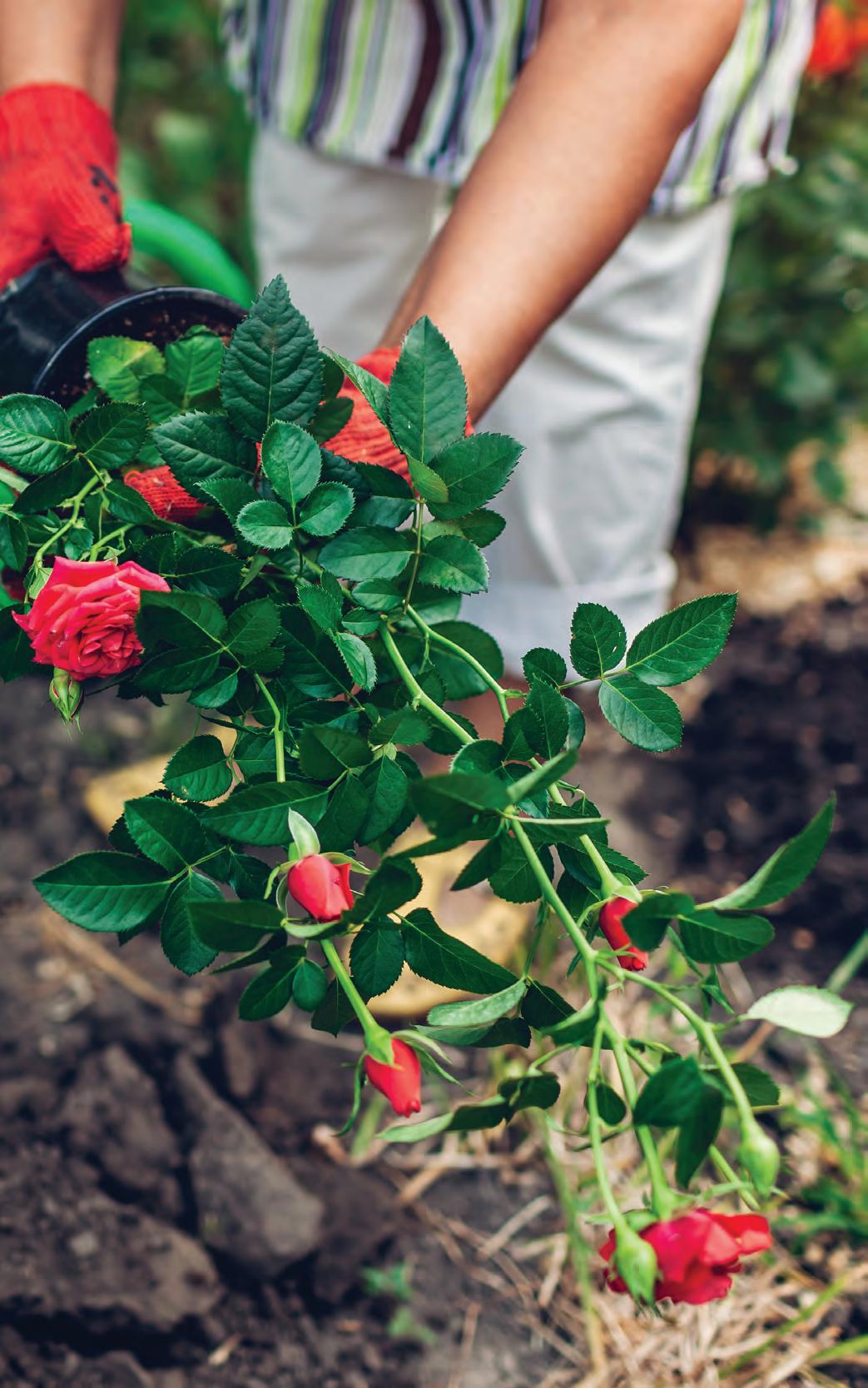
solace, The roses are a place where I think.
- Karen Radde
Image

Courtesy of the Steffen Thomas Museum of Art, 4200 Bethany Rd., Buckhead.

found world-wide. The best-known is Pierre-Joseph Redoubté, Les Roses (1817-21), who was asked by the Empress Josephine Bonaparte to paint the garden flowers at Malmaison. He produced 2,100 paintings depicting 1,800 different species. Locally, Steffen Thomas painted vases of roses and used roses in other paintings including “Venus with Roses,” according to Lisa Conner, daughter of Thomas and former director of the Steffen Thomas Museum of Art. Music highlights of roses include Mac Davis’ “Stop and Smell the Roses,” a 1974 top 10 song; Amanda McBroom’s “The Rose” which won Bette Midler a 1980 Grammy Award; and Edith Plath’s “La Vie en Rose.” Literature highlights of roses often include Rosebud in “Citizen Kane;” painting the roses in “Alice in Wonderland;” the red rose quote in “Romeo and Juliet;” and the fading rose in “Beauty and the Beast.”
The power of a rose is in the look given when the rose is accepted. Picture Renee Fleming being handed roses on stage after performing Countess Almaviva in Mozart’s “The Marriage of Figaro” or a child who receives a single rose after “The Nutcracker” performance. The first reaction is to smell the rose. The lesson the rose shares is to take time and smell its fragrance. The rose is indeed a force to be reckoned with.
Oconee • Greene • Morgan
Putnam • Athen-Clark County • Henry Butts • Newton • Rockdale • Walton










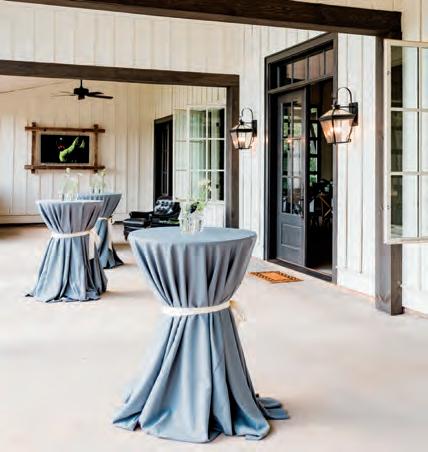

Centered on 62 acres of green space surrounded by lush pines, The Sixty-Two is a luxury wedding and event venue located in beautiful Madison, Georgia. Contact us to schedule a tour and start planning your event today!
WWW.THESIXTY-TWO.COM
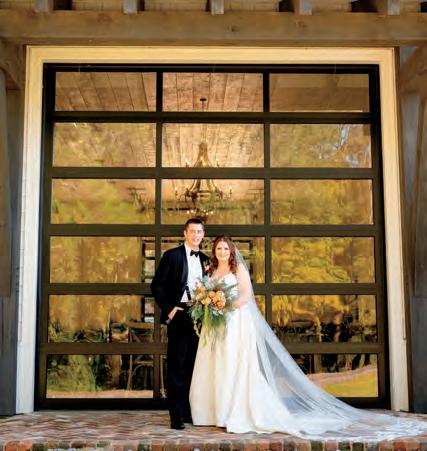

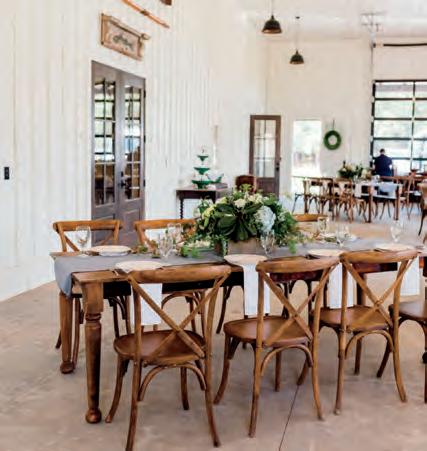















A young man hopped on top of the schooner’s hatch, bending and bouncing into a comfortable sitting position. He adjusted his ball cap and with an electric smile shouted, “Hello.” With an audience of 15 would-be sailors gathered on the deck of the 120-foot, two-masted J. & E. Riggin schooner in the harbor of Rockland, Maine, Captain Justin Schaefer’s welcome prepared us for our fiveday, music-themed voyage on Penobscot Bay and the life-lessons we would come to learn.
Built in 1927 as an oyster dredger for Charles Riggin of New Jersey and named after his two sons, Jacob and Edward, the J. & E. Riggin is one of few passenger vessels that remain. Part of her glory lies in her claim to having won the only official oyster schooner race on the Delaware Bay; that was 1929. She was rebuilt and
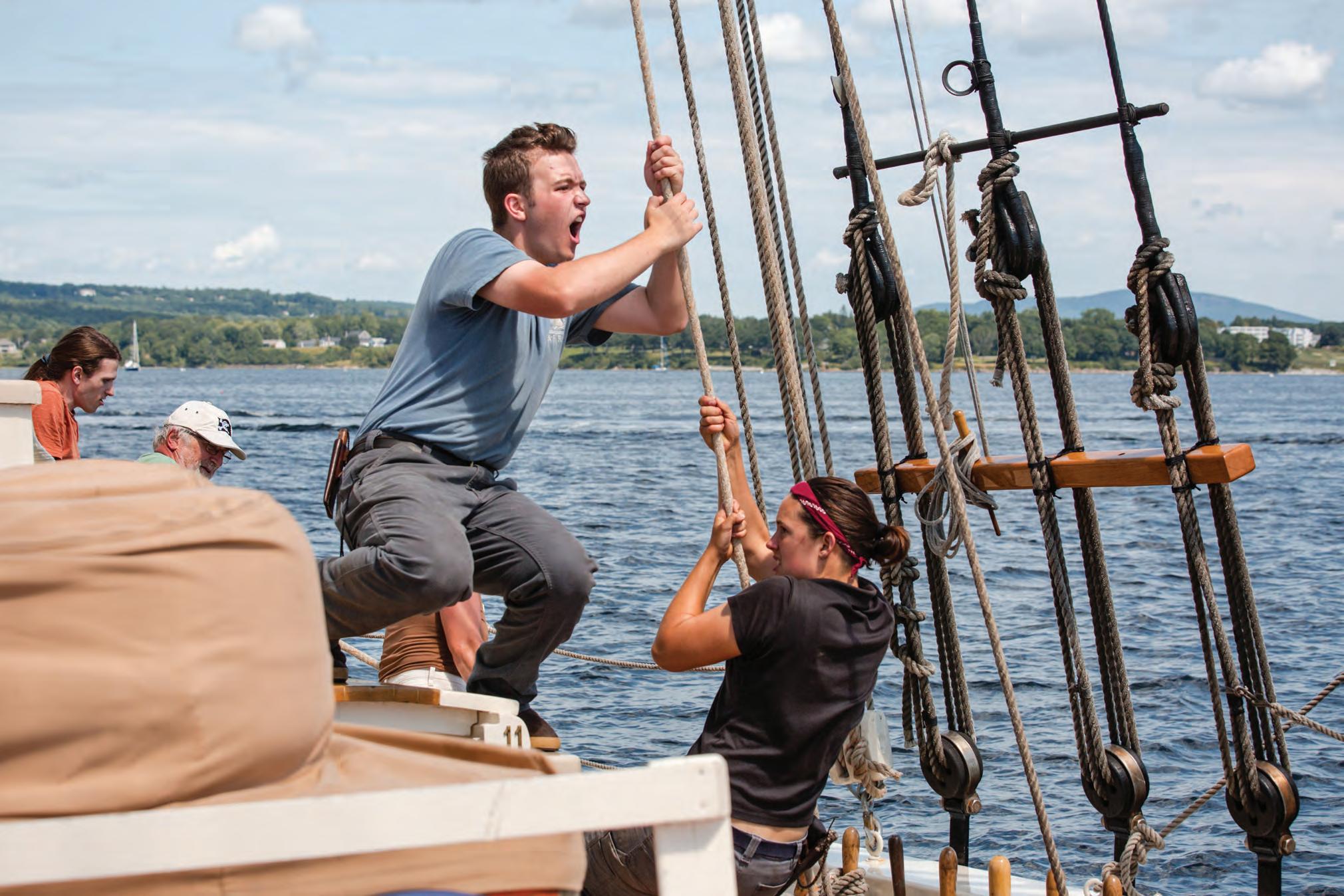

re-rigged as a passenger vessel and has been sailing Penobscot Bay since 1977. In 1991, she was officially named a National Historic Landmark.
First Impressions Tell the Tale
His dos and don’ts of a week’s ship living included an enthusiastic introduction of himself, his wife, Joselyn, and the crew. Alex, chief mate, with deckhands Keegan, Elias, Jenny, and apprentice, Johnny, who according to the captain, was the “epitome of untainted Americana.” So young, they appeared years shy of holding a driver’s license and, for sure, lacking the confident skills of a mariner. As the week progressed, these five unlocked the mysteries of their talents. From a “heave-ho,” to “hoist the anchor” or “take shelter,” the crew shattered the misguided perceptions of youth.
“Where are we headed?” shouted one passenger.
The captain answered that evening as he would answer each time. “Until we’re out there in the bay, I have no idea. See what the wind does and see what our options are. It’s about the wind, weather, and the tide.”
Captain Justin began working and sailing on the Riggin 15 years ago as “a tiny little guest,” he explained. “I came back every summer and was an apprentice until I was old enough to work as a deckhand.” The fit was ideal. “It was the boat that reached out and grabbed us,” meaning he and his wife, Joselyn, when they decided to own a windjammer rather than simply work on one. Ownership of the stately vessel would become a love story, an obvious observation by all who watched Captains Justin and Jocelyn care for their ship, the crew and her travelers.
Cabin four was home for the week, down seven extreme vertical stairs which must be descended backwards. Tiny and basic, two narrow perpendicular overlapping berths provided just enough room for a small sink, storage of two soft-sided duffels, and two people.

ABOVE: At times, raising the sails requires the crew to assist.
RIGHT: A picturesque harbor in Maine.

Two marine heads on the main deck, one doubling as a shower, adequately accommodated the guests and crew on board.
At morning’s first light, following the marine head sprint, a thermos of Rockland’s Rock City Coffee Roasters prompted everyone’s synchronous emergence from their cabin. For breakfast on day one, Maine blueberry pancakes with maple syrup and homegrown staples that would foreshadow the week’s culinary feasts.
Captain Jocelyn commanded the galley’s wood stove, serving homemade breads like bagels and biscuits, a slow-cooked beef brisket, bubbling clam chowder, a mile-high Sugar Bomb muffin drizzled with sugar; and the pièces de résistance, a breakfast of Chilaquiles (corn tortillas, avocado cream, salsa, topped with a fried egg) that had every passenger extending his belt.
Out of necessity, she learned the skills. “We needed a chef, so I had to become one,” she says. “What makes me want to stay in this role is the ability to curate what is a really essential part of the experience. I love that I can make sure the food we are providing is fresh and locally sourced. I love being able to tell you about the butcher who cut the steak and the farmer who grew your oyster.”
Food becomes an integral part of a travel experience, and it is no different on a sailing vessel. “If you were to travel to Maine and never experience
any of the cuisine, you would lose out on a huge part of immersing yourself in the culture of the place and understanding it. Sharing meals aboard with visitors from around the world, to me, is crucial to our connection, our conversation, and providing an experience of this place. It’s also a way for me to share a bit about myself.”
Each meal surpassed the one before. As a working vessel, everyone washed and dried their own tableware, readying them for the next meal. And afterwards, it was all about sailing.
Over 4,000 miles of coastline and 3,166 islands, Maine charms the world with its iconic lighthouses, lush, green forests, and classic lobster rolls. Southern Maine’s Penobscot Bay, an inlet of the Gulf of Maine and Atlantic Ocean, is framed by western villages like Rockland, Rockport, and Camden, and on the eastern side, the lobster mecca of Stonington. Hundreds of islands dot the calm waters making the bay exceptional cruising grounds for schooners, sailboats, and working lobster boats.
“Are you ready to go sailing?” Like clockwork after the morning meal, Chief Mate Alex shouted the question followed by a thunderous chorus of “Yes” from travelers.
Sailing each morning established routines like hoisting the sails—an all-hands-on deck, hand-over-hand movement—and raising the dreaded

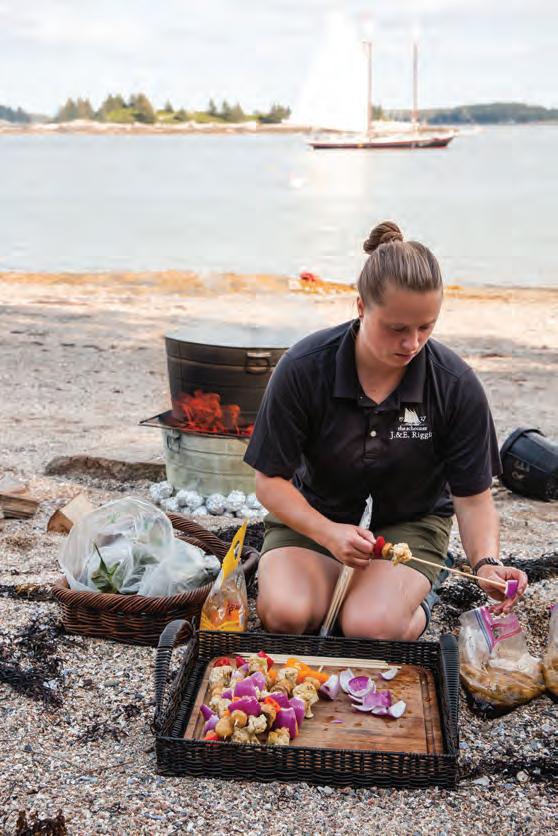
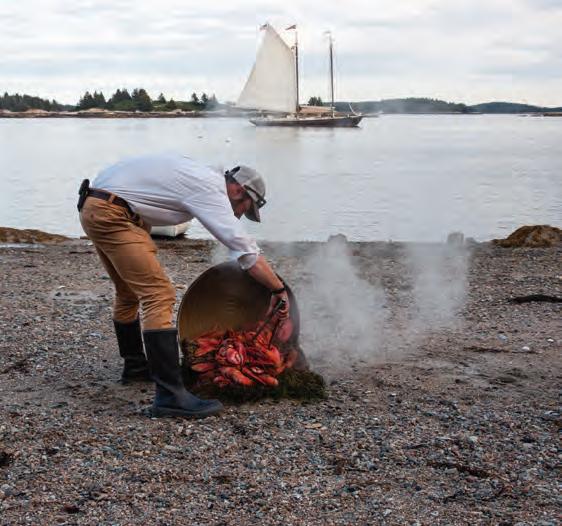










“Living aboard these old ships distances us from modern conveniences which makes us appreciate them more when we are reunited with them at the end of the trip.”


500-pound anchor—and more so, the watery chain that appeared one link at a time as two teams of two on either side of the winch pushed down with all their might. By the end of the week, volunteers for the anchor pull were reluctant participants, yet stepped up to the plate in the name of adventure.
Lines of bodies formed to raise the sails, and volunteers stepped up to raise the anchor. After the heavy lifting, passengers grabbed a book, a camera, or a guitar and found a resting place on deck to allow the coastline to cast its spell.
Although life on the J. & E. Riggin is much easier than its earlier years, she still requires much the same protocols. In order to make work on the ship a bit easier, the song assisted. For centuries, it was the sea shanty that added muscle to men’s sweat. “We need you to get the sails up,” said Captain Justin to those on board, as the musicians decide on the shanty accompaniment. “A good shanty is worth 10 crew members.”
Today, sea shanties aren’t the sole power behind the crew on sailing vessels, yet sailor songs run deep in




American folk music. These “call and response” songs made synchronized work easier and more tolerable in unfavorable conditions. Shanties like “Blow the Man Down,” “Leave Her, Johnny,” and “Wellerman” bring about toe-tapping and swaying to the rhythm. It’s inevitable, and on this sailing, passengers pulled and hauled to the cadence of the shanty with not one complaint.
After sunset, passengers gathered underneath the ship’s awnings as New Englanders Ethan Tischler and Elsie Gawler, with voice and string, brought to life century’s old shanties
and shared the stories of the sea. As songwriters and singers, they honor the musical traditions of Quebec, New England, as well as their own Celtic heritage. The duo’s effortless harmonies encapsulated those listening, and often took us to sheltered places in our memories that hadn’t been revisited in years. Whether it was the power of the music, the lyrics or the sea, it wasn’t clear.
While under sail, from bow to stern, impromptu concerts popped up with Ethan and Elsie grabbing their cello, violin, mandolin, banjo or guitar, whichever was most handy. Joined by
crewmember Johnny on the concertina or spoons, or the passenger who had packed her violin in her duffle, a menagerie of sounds floated between the sails, over the water, and into each listener.
This evening, the ship anchored near Swan’s Island for the Sweet Chariot Music Festival at The Oddfellow’s Hall. “Shanties on Shipboard” showcased a cast of characters and musicians “from the far reaches of America and beyond” whose lives have been touched by the sea. An unexpected invitation to take the stage was given to apprentice Johnny and


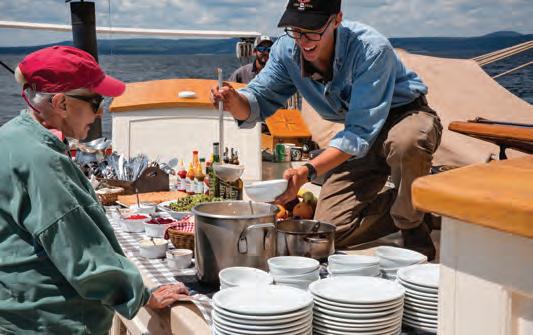
ABOVE: Grab a book or take a nap on deck.
LEFT: The crew dishes up clam chowder for lunch. BELOW: Eggs benedict for breakfast. BOTTOM LEFT: The captain’s map.


his sister, Brigid Reedy, both accomplished musicians from Montana. With guitar and fiddle, they brought the house down with an uproarious standing ovation. Not a bad prelude to Brigid’s upcoming performance at Carnegie Hall in the spring.
Lobster on a Beach is Still FiveStar Dining
Anchored in Stonington harbor, the schooner sat empty. Ushering passengers by tender, the captain shuttled travelers to Russ Island, part of the Maine Island Trail, for what most considered to be the highlight of the week: a lobster bake. Earlier, the day’s fresh catch was gathered in the village of Stonington and brought onboard. Tonight, the passengers would feast.
First, to whet the appetite, raw oysters, shucked by Joselyn. A young lady from Finland had her first raw oyster, and to her shock, enjoyed it ever-so-slightly. Even the schooner’s apprentice Johnny was foreign to the experience, and after being shamed into it, he gave in and let the oyster slide.
The crew had arrived earlier, prepping food, shucking corn, chopping vegetables, and firing up the tin tub. Almost ceremonial, with fire blazing and smoke billowing, the crew drops each lobster into the second tub which sits over the fire and then, covers its contents with seaweed.
In time, the captain, sporting his most muscular stance, flips the lobster tub onto the ground and retrieves the bright red delicacies, artistically arranging each on the mound of smoking seaweed. The line forms, and the captain serves his sailors. To punctuate the evening, chocolate and marshmallows squeezed between warm, homemade pizzelles sweetened the meal, ensuring that one would ever look at a s’more the same way again.
At dusk and with our bellies full, the last tender returned to the vessel for more songs underneath the Maine sky.
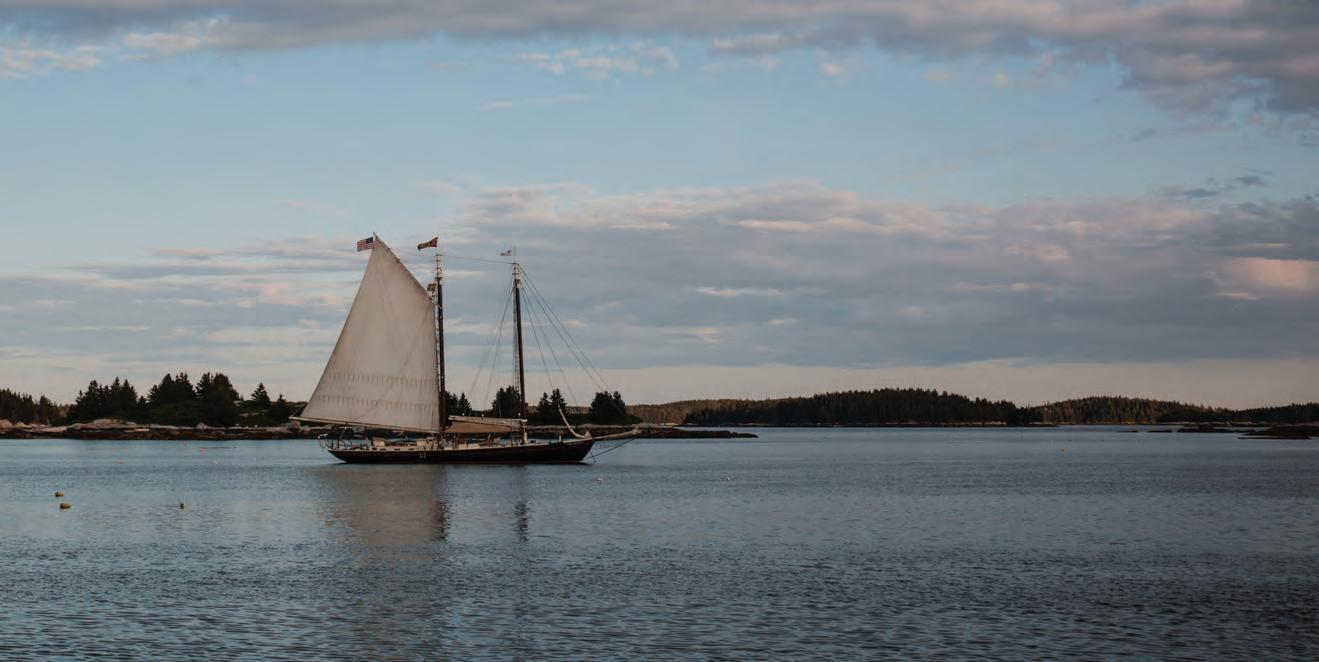
For five days, song, food, and exploration released everyone from their everyday routines.
“I see the Riggin continuing to offer her guests a life-changing experience along the coast of Maine,” shared Jocelyn. “This vessel holds a special place in the hearts of those who have sailed aboard her. For that reason, she is surrounded by a really supportive community of guests and crew, and over the next decade, we hope to find more like-minded artists and craftspeople looking for a home at sea.”
As the days on the water ended, the mystery of why people return year-after-year became clear.
For Jocelyn, “sailing on a schooner has taught me, and a lot of people, to step back from the hustle, and appreciate the simplicity of being outside. Time melts away when you let go of the things that weigh on your mind on shore. Living aboard these old ships distances us from modern conveniences which makes us appreciate them more when we are reunited with them at the end of the trip.”
Before disembarking the schooner in Rockland, we paused to snap an epic group photo and exchange phone numbers and emails. As people left for


their car or the airport, the captain shouted, “Don’t keep us a secret.”
Every adventure to an unfamiliar place uncovers moments that, as a favorable consequence of travel, in this traveler’s opinion, must be shared.
Maine’s craggy coastline is a wonder; lighthouses, sailboats, fir trees. Simplicity defines the world’s beauty.
Storms come quickly. In a matter of seconds, the crew jumped into action— shutting, closing, locking, moving anything unconfined, including me. When the storm passed, the captain found the sun again.
Things change rapidly.
Wherever large groups form, politics and religion are destined for conversation; few
engaged, but everyone listened. Be respectful and learn.
Shanties provide untapped strength to mariners, even in the 21st century. Yesterday always schools us.
The captain asked one morning, “Where do you want to go today?” One replied, “Some place nice.” Everyone simply wants to go somewhere nice.
Travel is the great connector. India. Copenhagen. Ireland. Switzerland. Athens. The world assembled on this small schooner off the shore in Southern Maine. Quite extraordinary.
For more information on sailing during the 2024 season as well as learning about the themed offerings, visit mainewindjammer. com



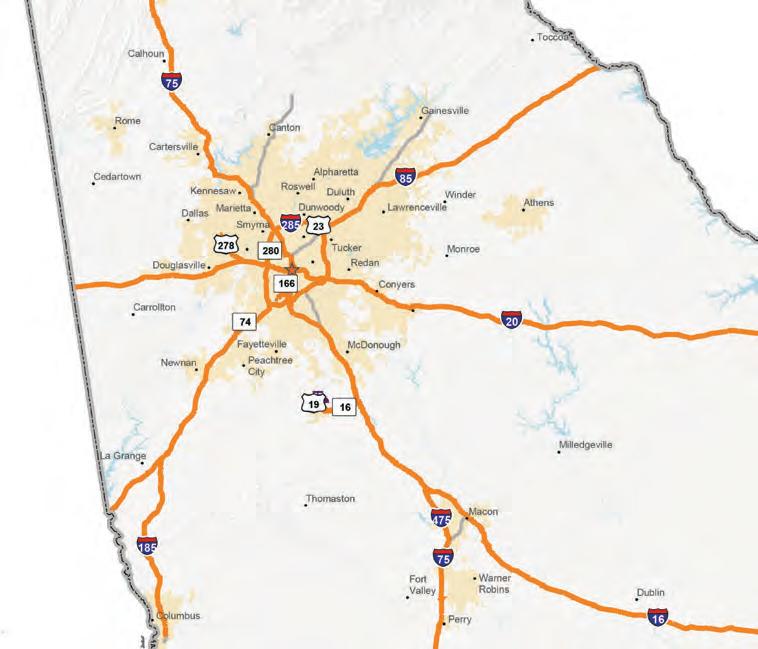















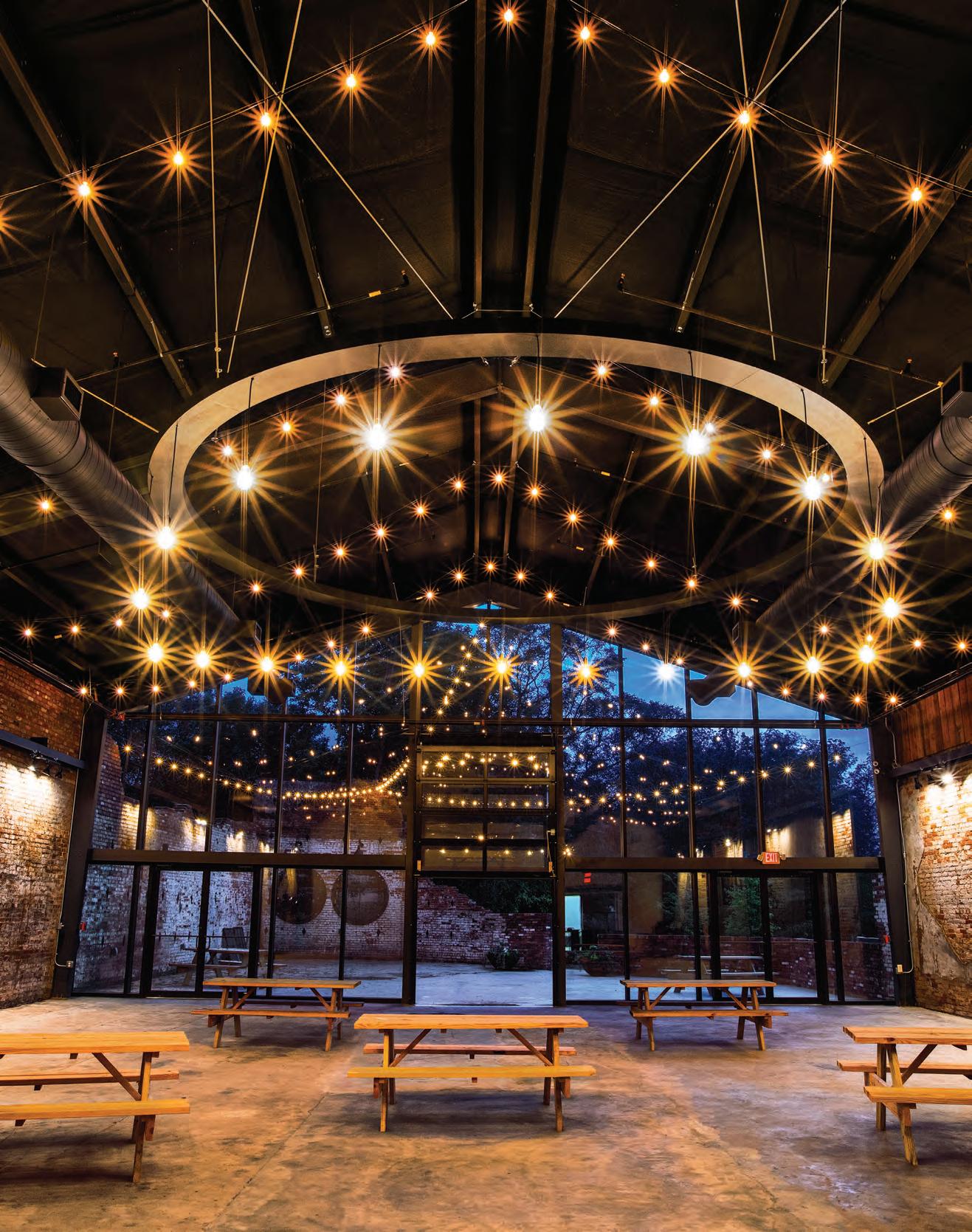

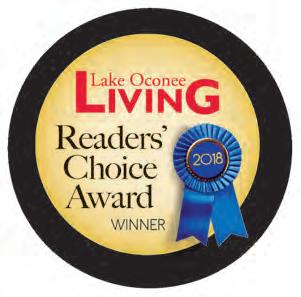


Spend
Springtime is blooming with festivals and fun-filled events throughout the Lake Oconee region.
March 7
The Classic Center in downtown Athens presents “Celtic Woman” at 7 p.m. classiccenter.com
March 14-15
Bob Dylan performs at the Classic Center in downtown Athens at 8 p.m. nightly as part of his Rough and Rowdy Ways tour. classiccenter.com
March 14-17
The Lake Country Players presents “And Then There Were
None” at Festival Hall in downtown Greensboro. lakecountryplayers.org
March 15-17
The Lake Oconee Food & Wine Festival is held at The Ritz-Carlton Reynolds, Lake Oconee. Lakeoconeefoodandwine.com
March 16
The Lake Oconee Area Builders Association holds its annual “Big Event” from 10 a.m. to 4 p.m. at Lake Oconee Village, 1000 Vista Drive in Greensboro. lobalive.com
Through March 16
An exhibition by Athens artist Roman Zalac “in search of,” is on display at MAGallery in downtown Madison. TheMadisonArtistsGuild.org.
March 17
An opening reception for “The Beauty of Land & Spaces in the South,” featuring photographs of Emily Followill is held from 2 p.m. to 4 p.m. at the Madison-Morgan Cultural Center. mmcc-arts.org
March 17
The State Botanical Garden of Georgia in Athens holds its annu-
al spring family festival, “Georgia Questival” from 1 p.m. to 5 p.m. uga.edu/botgarden
March 22
OPAS presents “Louis Armstrong and More!” at 7:30 p.m. at Festival Hall in downtown Greensboro as part of the OPAS Lounge Series. opas.org
March 22
An opening reception for Atlanta illustrator/artist Tom Gonzalez and his show “Spring, Hummingbirds, and Flowers” is held from 6 p.m. to 8 p.m. at MAGallery in downtown Madison.
TheMadisonArtistsGuild.org.
March 23
The 13th annual Firefly Trail Ticket to Ride and Union Point’s 120th Birthday Celebration is held in downtown Union Point from 10 a.m. to 3 p.m. unionpointga.org
March 23
The Queen Tribute Band, Kings of Queen, performs at 7:30 p.m. at the Plaza Arts Center in downtown Eatonton. Tickets are $55, $65 and $75. Plazacenter.org
March 23
March 24
The Madison-Morgan Cultural Center hosts its annual Easter Egg Hunt at 1 p.m. Mmcc-arts.org
April
April 12-13
The State Botanical Garden of Georgia in Athens holds its Spring Plant Sale from 2 p.m. to 6 p.m. on Friday and from 8 a.m. to 2 p.m. Saturday. uga.edu/botgarden
April 13
The annual Sweet Tooth Festival is held at the Fairgrounds in Madison from noon to 5 p.m. madisonga.com
The Magnolia Market & Chalk Walk is held from 10 a.m. to 3 p.m. in downtown Eatonton. Downtowneatonton.com
April 19-20
The 2024 Madison Spring Tour of Homes and Gardens is held throughout historic Madison from 10 a.m. to 4 p.m. daily. The self-guided tour will feature a selection of Madison’s treasured historic and modern homes. mmcc-arts.org
April 19, 20, 21, 25, 26 and 27
PAPA presents “Steel Magnolias” at the Plaza Arts Center in downtown Eatonton. plazacenter.org
April 20
Downtown Greensboro holds its annual Southland Jubilee festival from 10 a.m. to 5 p.m. featuring an array of vendors, live music and food concessions.

facebook.com/DowntownGreensboroGA
April 20
The Morgan County NAACP Parade & Festival is held in downtown Madison and Town Park featuring music, food, crafters and more.
madisonga.com
April 21
The Athens Beer Fest is held at the Classic Center in downtown Athens.
Classiccenter.com
April 27
The 25th annual Madison Fest is held in Town Park in downtown Madison from 10 a.m. to 4 p.m. featuring more than 75 local and regional crafters, plant sales, kids




activities, food concessions, live music and more. madisonga.com
April 27-28
The 9th Annual Georgia Tiny House Festival is held at Madison’s Lions Club Fairgrounds featuring tours, entertainment, speakers, vendors, artisans, food concessions, workshops and more.
unitedtinyhouse.com
April 27
The Plaza Arts Center in downtown Eatonton hosts a free May Day Celebration from 10 a.m. to noon on the Plaza lawn. Plazacenter.org
April 30
The Classic Center in downtown Athens presents “Menopause The
Musical 2: Cruising Through ‘The Change’” at 7:30 p.m. classiccenter.com
May May 3
An opening reception for “Finding Light” with Dana Johns is held from 6 p.m. to 8 p.m. at MAGallery in downtown Madison. TheMadisonArtistsGuild.org.
May 4
The “Peg Leg” Howell BBQ & Blues Festival is held in downtown Eatonton from 2 p.m. to 10 p.m. Downtowneatonton.com
May 4
Friends of Hard Labor Creek sponsors its Waterwheel Tour-
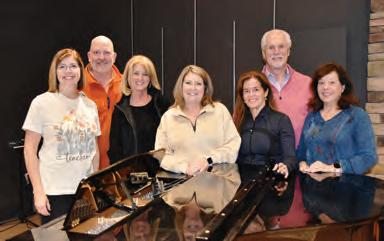
April 25
“Ease on Down the Road” to Festival Hall in downtown Greensboro for the Lake Country Chorus’s Spring Concert “On Broadway,” at 7:30 p.m., featuring tunes from Tony Award winning Broadway musicals including favorites from Les Miserables, Oklahoma, Guys and Dolls and Rent, or new music from Dear Evan Hanson, Ragtime and Matilda.The 50-singers
Chorus members
Beth Mappes, Drace Langford, Charlotte Mosteller, Ellen Mirren, Vern Sumner, and Rusty Faulk with new Chorus director, Cat Williamson, center.
strong group is under the new direction of Cat Williamson. The event will also include special guest appearances by students from the Arts Barn. Tickets are on sale through chorus members and at Bank South. For more information, follow Lake Country Chorus on Facebook or contact Melanie Schultz at rometavo@aol.com.

nament at The Creek at Hard Labor with a 9 a.m. shotgun start. racerpal.com/races/waterwheel
May 5
The Atlanta Symphony Orchestra performs at 3 p.m. at the UGA Performing Arts Center in Athens. pac.uga.edu
May 7
The Classic Center in downtown Athens presents the Tony Award-winning musical “The Book of Mormon” at 7:30 p.m. classiccenter.com
May 11
The Plaza Arts Center in down-
town Eatonton presents a concert by Fortunate Sons - A CCR Tribute by Georgia Players Guild at 7:30 p.m. on the lawn. Tickets are $25 for general admission and $50 for VIP.
Plazacenter.org
May 11
Ten-time Grammy winner and Rock & Roll Hall of Fame member Bonnie Raitt performs at the Classic Center in downtown Athens at 7:30 p.m.. Classiccenter.com
May 11
The 2024 Madison in May 5K and 10K Road Race returns to Madison. Registration is available at RunSignup.com
May 16
The Grand Finale of the 22nd annual Madison Chamber Music Festival is held at 7:30 p.m. at the Madison-Morgan Cultural Center.
Mmcc-arts.org
May 23
Festival Hall in downtown Greensboro presents The Jazz Legacy Project: Nat “King” Cole, Unforgettable at 7:30 p.m. festivalhallga.com
May 25
OPAS presents its annual Memorial Day Weekend Patriotic Concert at 7 p.m. at The Farm at
Oconee in Greensboro. opas.org
May 27
The 2024 Ride for America motorcycle parade and Memorial Day Ceremony is held in Town Park in downtown Madison at 11 a.m. madisonga.com
May 31
The Plaza Arts Center in downtown Eatonton presents a free outdoor concert by Grid Rocked at 7:30 p.m. to kick off the annual Putnam County Dairy Festival. Plazacenter.org
















Monday
Tuesday













Athens
Atlanta
Barkin’
Bend


Jennifer
Jim



More Than Blinds
Oconee Brewing Co.
PDI
Rachael Bell Interiors
Reynolds Lake Oconee
Ricardo’s Kouzzina
Rutledge Hardware
Selwood Farm
Southern Laser Medical Spa
Spa Medical
Stanton Home Furnishings
Strawn & Co.
The
The
The
Tim

Fine Dining in the Madison Historic District
Open Evenings
Thurs / Fri / Sat




